Quaternary Research


Subject Area and Category
- Arts and Humanities (miscellaneous)
- Earth and Planetary Sciences (miscellaneous)
- Earth-Surface Processes
Cambridge University Press
Publication type
Information.
How to publish in this journal
The set of journals have been ranked according to their SJR and divided into four equal groups, four quartiles. Q1 (green) comprises the quarter of the journals with the highest values, Q2 (yellow) the second highest values, Q3 (orange) the third highest values and Q4 (red) the lowest values.
| Category | Year | Quartile |
|---|---|---|
| Arts and Humanities (miscellaneous) | 1999 | Q1 |
| Arts and Humanities (miscellaneous) | 2000 | Q1 |
| Arts and Humanities (miscellaneous) | 2001 | Q1 |
| Arts and Humanities (miscellaneous) | 2002 | Q1 |
| Arts and Humanities (miscellaneous) | 2003 | Q1 |
| Arts and Humanities (miscellaneous) | 2004 | Q1 |
| Arts and Humanities (miscellaneous) | 2005 | Q1 |
| Arts and Humanities (miscellaneous) | 2006 | Q1 |
| Arts and Humanities (miscellaneous) | 2007 | Q1 |
| Arts and Humanities (miscellaneous) | 2008 | Q1 |
| Arts and Humanities (miscellaneous) | 2009 | Q1 |
| Arts and Humanities (miscellaneous) | 2010 | Q1 |
| Arts and Humanities (miscellaneous) | 2011 | Q1 |
| Arts and Humanities (miscellaneous) | 2012 | Q1 |
| Arts and Humanities (miscellaneous) | 2013 | Q1 |
| Arts and Humanities (miscellaneous) | 2014 | Q1 |
| Arts and Humanities (miscellaneous) | 2015 | Q1 |
| Arts and Humanities (miscellaneous) | 2016 | Q1 |
| Arts and Humanities (miscellaneous) | 2017 | Q1 |
| Arts and Humanities (miscellaneous) | 2018 | Q1 |
| Arts and Humanities (miscellaneous) | 2019 | Q1 |
| Arts and Humanities (miscellaneous) | 2020 | Q1 |
| Arts and Humanities (miscellaneous) | 2021 | Q1 |
| Arts and Humanities (miscellaneous) | 2022 | Q1 |
| Arts and Humanities (miscellaneous) | 2023 | Q1 |
| Earth and Planetary Sciences (miscellaneous) | 1999 | Q1 |
| Earth and Planetary Sciences (miscellaneous) | 2000 | Q1 |
| Earth and Planetary Sciences (miscellaneous) | 2001 | Q1 |
| Earth and Planetary Sciences (miscellaneous) | 2002 | Q1 |
| Earth and Planetary Sciences (miscellaneous) | 2003 | Q1 |
| Earth and Planetary Sciences (miscellaneous) | 2004 | Q1 |
| Earth and Planetary Sciences (miscellaneous) | 2005 | Q1 |
| Earth and Planetary Sciences (miscellaneous) | 2006 | Q1 |
| Earth and Planetary Sciences (miscellaneous) | 2007 | Q1 |
| Earth and Planetary Sciences (miscellaneous) | 2008 | Q1 |
| Earth and Planetary Sciences (miscellaneous) | 2009 | Q1 |
| Earth and Planetary Sciences (miscellaneous) | 2010 | Q1 |
| Earth and Planetary Sciences (miscellaneous) | 2011 | Q1 |
| Earth and Planetary Sciences (miscellaneous) | 2012 | Q1 |
| Earth and Planetary Sciences (miscellaneous) | 2013 | Q1 |
| Earth and Planetary Sciences (miscellaneous) | 2014 | Q1 |
| Earth and Planetary Sciences (miscellaneous) | 2015 | Q1 |
| Earth and Planetary Sciences (miscellaneous) | 2016 | Q1 |
| Earth and Planetary Sciences (miscellaneous) | 2017 | Q1 |
| Earth and Planetary Sciences (miscellaneous) | 2018 | Q1 |
| Earth and Planetary Sciences (miscellaneous) | 2019 | Q1 |
| Earth and Planetary Sciences (miscellaneous) | 2020 | Q1 |
| Earth and Planetary Sciences (miscellaneous) | 2021 | Q1 |
| Earth and Planetary Sciences (miscellaneous) | 2022 | Q1 |
| Earth and Planetary Sciences (miscellaneous) | 2023 | Q1 |
| Earth-Surface Processes | 1999 | Q1 |
| Earth-Surface Processes | 2000 | Q1 |
| Earth-Surface Processes | 2001 | Q1 |
| Earth-Surface Processes | 2002 | Q1 |
| Earth-Surface Processes | 2003 | Q1 |
| Earth-Surface Processes | 2004 | Q1 |
| Earth-Surface Processes | 2005 | Q1 |
| Earth-Surface Processes | 2006 | Q1 |
| Earth-Surface Processes | 2007 | Q1 |
| Earth-Surface Processes | 2008 | Q1 |
| Earth-Surface Processes | 2009 | Q1 |
| Earth-Surface Processes | 2010 | Q1 |
| Earth-Surface Processes | 2011 | Q1 |
| Earth-Surface Processes | 2012 | Q1 |
| Earth-Surface Processes | 2013 | Q1 |
| Earth-Surface Processes | 2014 | Q1 |
| Earth-Surface Processes | 2015 | Q1 |
| Earth-Surface Processes | 2016 | Q1 |
| Earth-Surface Processes | 2017 | Q1 |
| Earth-Surface Processes | 2018 | Q1 |
| Earth-Surface Processes | 2019 | Q1 |
| Earth-Surface Processes | 2020 | Q1 |
| Earth-Surface Processes | 2021 | Q1 |
| Earth-Surface Processes | 2022 | Q1 |
| Earth-Surface Processes | 2023 | Q1 |
The SJR is a size-independent prestige indicator that ranks journals by their 'average prestige per article'. It is based on the idea that 'all citations are not created equal'. SJR is a measure of scientific influence of journals that accounts for both the number of citations received by a journal and the importance or prestige of the journals where such citations come from It measures the scientific influence of the average article in a journal, it expresses how central to the global scientific discussion an average article of the journal is.
| Year | SJR |
|---|---|
| 1999 | 2.228 |
| 2000 | 2.856 |
| 2001 | 2.284 |
| 2002 | 2.192 |
| 2003 | 2.172 |
| 2004 | 2.139 |
| 2005 | 1.865 |
| 2006 | 1.882 |
| 2007 | 1.945 |
| 2008 | 1.923 |
| 2009 | 2.013 |
| 2010 | 1.758 |
| 2011 | 1.753 |
| 2012 | 1.651 |
| 2013 | 1.433 |
| 2014 | 1.241 |
| 2015 | 1.356 |
| 2016 | 1.082 |
| 2017 | 1.216 |
| 2018 | 1.040 |
| 2019 | 0.978 |
| 2020 | 0.872 |
| 2021 | 0.929 |
| 2022 | 0.860 |
| 2023 | 0.787 |
Evolution of the number of published documents. All types of documents are considered, including citable and non citable documents.
| Year | Documents |
|---|---|
| 1999 | 71 |
| 2000 | 83 |
| 2001 | 77 |
| 2002 | 89 |
| 2003 | 83 |
| 2004 | 63 |
| 2005 | 78 |
| 2006 | 90 |
| 2007 | 89 |
| 2008 | 79 |
| 2009 | 96 |
| 2010 | 100 |
| 2011 | 122 |
| 2012 | 116 |
| 2013 | 102 |
| 2014 | 103 |
| 2015 | 92 |
| 2016 | 74 |
| 2017 | 70 |
| 2018 | 85 |
| 2019 | 109 |
| 2020 | 77 |
| 2021 | 92 |
| 2022 | 75 |
| 2023 | 79 |
This indicator counts the number of citations received by documents from a journal and divides them by the total number of documents published in that journal. The chart shows the evolution of the average number of times documents published in a journal in the past two, three and four years have been cited in the current year. The two years line is equivalent to journal impact factor ™ (Thomson Reuters) metric.
| Cites per document | Year | Value |
|---|---|---|
| Cites / Doc. (4 years) | 1999 | 2.219 |
| Cites / Doc. (4 years) | 2000 | 3.035 |
| Cites / Doc. (4 years) | 2001 | 2.819 |
| Cites / Doc. (4 years) | 2002 | 2.702 |
| Cites / Doc. (4 years) | 2003 | 3.072 |
| Cites / Doc. (4 years) | 2004 | 2.982 |
| Cites / Doc. (4 years) | 2005 | 2.593 |
| Cites / Doc. (4 years) | 2006 | 3.371 |
| Cites / Doc. (4 years) | 2007 | 2.962 |
| Cites / Doc. (4 years) | 2008 | 3.131 |
| Cites / Doc. (4 years) | 2009 | 3.104 |
| Cites / Doc. (4 years) | 2010 | 3.593 |
| Cites / Doc. (4 years) | 2011 | 3.250 |
| Cites / Doc. (4 years) | 2012 | 3.071 |
| Cites / Doc. (4 years) | 2013 | 3.224 |
| Cites / Doc. (4 years) | 2014 | 2.739 |
| Cites / Doc. (4 years) | 2015 | 2.659 |
| Cites / Doc. (4 years) | 2016 | 2.639 |
| Cites / Doc. (4 years) | 2017 | 2.615 |
| Cites / Doc. (4 years) | 2018 | 2.434 |
| Cites / Doc. (4 years) | 2019 | 2.364 |
| Cites / Doc. (4 years) | 2020 | 2.355 |
| Cites / Doc. (4 years) | 2021 | 2.701 |
| Cites / Doc. (4 years) | 2022 | 2.388 |
| Cites / Doc. (4 years) | 2023 | 1.980 |
| Cites / Doc. (3 years) | 1999 | 2.219 |
| Cites / Doc. (3 years) | 2000 | 2.965 |
| Cites / Doc. (3 years) | 2001 | 2.740 |
| Cites / Doc. (3 years) | 2002 | 2.701 |
| Cites / Doc. (3 years) | 2003 | 3.044 |
| Cites / Doc. (3 years) | 2004 | 2.618 |
| Cites / Doc. (3 years) | 2005 | 2.413 |
| Cites / Doc. (3 years) | 2006 | 3.152 |
| Cites / Doc. (3 years) | 2007 | 2.879 |
| Cites / Doc. (3 years) | 2008 | 2.805 |
| Cites / Doc. (3 years) | 2009 | 3.023 |
| Cites / Doc. (3 years) | 2010 | 3.280 |
| Cites / Doc. (3 years) | 2011 | 3.120 |
| Cites / Doc. (3 years) | 2012 | 2.811 |
| Cites / Doc. (3 years) | 2013 | 3.053 |
| Cites / Doc. (3 years) | 2014 | 2.494 |
| Cites / Doc. (3 years) | 2015 | 2.583 |
| Cites / Doc. (3 years) | 2016 | 2.539 |
| Cites / Doc. (3 years) | 2017 | 2.580 |
| Cites / Doc. (3 years) | 2018 | 2.322 |
| Cites / Doc. (3 years) | 2019 | 2.245 |
| Cites / Doc. (3 years) | 2020 | 2.239 |
| Cites / Doc. (3 years) | 2021 | 2.686 |
| Cites / Doc. (3 years) | 2022 | 2.129 |
| Cites / Doc. (3 years) | 2023 | 2.115 |
| Cites / Doc. (2 years) | 1999 | 2.063 |
| Cites / Doc. (2 years) | 2000 | 2.515 |
| Cites / Doc. (2 years) | 2001 | 2.617 |
| Cites / Doc. (2 years) | 2002 | 2.519 |
| Cites / Doc. (2 years) | 2003 | 2.699 |
| Cites / Doc. (2 years) | 2004 | 2.221 |
| Cites / Doc. (2 years) | 2005 | 2.158 |
| Cites / Doc. (2 years) | 2006 | 2.688 |
| Cites / Doc. (2 years) | 2007 | 2.345 |
| Cites / Doc. (2 years) | 2008 | 2.575 |
| Cites / Doc. (2 years) | 2009 | 2.577 |
| Cites / Doc. (2 years) | 2010 | 2.880 |
| Cites / Doc. (2 years) | 2011 | 2.776 |
| Cites / Doc. (2 years) | 2012 | 2.473 |
| Cites / Doc. (2 years) | 2013 | 2.803 |
| Cites / Doc. (2 years) | 2014 | 2.532 |
| Cites / Doc. (2 years) | 2015 | 2.376 |
| Cites / Doc. (2 years) | 2016 | 2.379 |
| Cites / Doc. (2 years) | 2017 | 2.367 |
| Cites / Doc. (2 years) | 2018 | 2.139 |
| Cites / Doc. (2 years) | 2019 | 2.213 |
| Cites / Doc. (2 years) | 2020 | 2.211 |
| Cites / Doc. (2 years) | 2021 | 2.280 |
| Cites / Doc. (2 years) | 2022 | 2.213 |
| Cites / Doc. (2 years) | 2023 | 1.964 |
Evolution of the total number of citations and journal's self-citations received by a journal's published documents during the three previous years. Journal Self-citation is defined as the number of citation from a journal citing article to articles published by the same journal.
| Cites | Year | Value |
|---|---|---|
| Self Cites | 1999 | 40 |
| Self Cites | 2000 | 47 |
| Self Cites | 2001 | 55 |
| Self Cites | 2002 | 43 |
| Self Cites | 2003 | 73 |
| Self Cites | 2004 | 41 |
| Self Cites | 2005 | 38 |
| Self Cites | 2006 | 61 |
| Self Cites | 2007 | 23 |
| Self Cites | 2008 | 37 |
| Self Cites | 2009 | 42 |
| Self Cites | 2010 | 32 |
| Self Cites | 2011 | 54 |
| Self Cites | 2012 | 45 |
| Self Cites | 2013 | 49 |
| Self Cites | 2014 | 48 |
| Self Cites | 2015 | 51 |
| Self Cites | 2016 | 29 |
| Self Cites | 2017 | 20 |
| Self Cites | 2018 | 32 |
| Self Cites | 2019 | 20 |
| Self Cites | 2020 | 23 |
| Self Cites | 2021 | 33 |
| Self Cites | 2022 | 20 |
| Self Cites | 2023 | 19 |
| Total Cites | 1999 | 415 |
| Total Cites | 2000 | 587 |
| Total Cites | 2001 | 589 |
| Total Cites | 2002 | 624 |
| Total Cites | 2003 | 758 |
| Total Cites | 2004 | 652 |
| Total Cites | 2005 | 567 |
| Total Cites | 2006 | 706 |
| Total Cites | 2007 | 665 |
| Total Cites | 2008 | 721 |
| Total Cites | 2009 | 780 |
| Total Cites | 2010 | 866 |
| Total Cites | 2011 | 858 |
| Total Cites | 2012 | 894 |
| Total Cites | 2013 | 1032 |
| Total Cites | 2014 | 848 |
| Total Cites | 2015 | 829 |
| Total Cites | 2016 | 754 |
| Total Cites | 2017 | 694 |
| Total Cites | 2018 | 548 |
| Total Cites | 2019 | 514 |
| Total Cites | 2020 | 591 |
| Total Cites | 2021 | 728 |
| Total Cites | 2022 | 592 |
| Total Cites | 2023 | 516 |
Evolution of the number of total citation per document and external citation per document (i.e. journal self-citations removed) received by a journal's published documents during the three previous years. External citations are calculated by subtracting the number of self-citations from the total number of citations received by the journal’s documents.
| Cites | Year | Value |
|---|---|---|
| External Cites per document | 1999 | 2.005 |
| External Cites per document | 2000 | 2.727 |
| External Cites per document | 2001 | 2.484 |
| External Cites per document | 2002 | 2.515 |
| External Cites per document | 2003 | 2.751 |
| External Cites per document | 2004 | 2.454 |
| External Cites per document | 2005 | 2.251 |
| External Cites per document | 2006 | 2.879 |
| External Cites per document | 2007 | 2.779 |
| External Cites per document | 2008 | 2.661 |
| External Cites per document | 2009 | 2.860 |
| External Cites per document | 2010 | 3.159 |
| External Cites per document | 2011 | 2.924 |
| External Cites per document | 2012 | 2.670 |
| External Cites per document | 2013 | 2.908 |
| External Cites per document | 2014 | 2.353 |
| External Cites per document | 2015 | 2.424 |
| External Cites per document | 2016 | 2.441 |
| External Cites per document | 2017 | 2.506 |
| External Cites per document | 2018 | 2.186 |
| External Cites per document | 2019 | 2.157 |
| External Cites per document | 2020 | 2.152 |
| External Cites per document | 2021 | 2.565 |
| External Cites per document | 2022 | 2.058 |
| External Cites per document | 2023 | 2.037 |
| Cites per document | 1999 | 2.219 |
| Cites per document | 2000 | 2.965 |
| Cites per document | 2001 | 2.740 |
| Cites per document | 2002 | 2.701 |
| Cites per document | 2003 | 3.044 |
| Cites per document | 2004 | 2.618 |
| Cites per document | 2005 | 2.413 |
| Cites per document | 2006 | 3.152 |
| Cites per document | 2007 | 2.879 |
| Cites per document | 2008 | 2.805 |
| Cites per document | 2009 | 3.023 |
| Cites per document | 2010 | 3.280 |
| Cites per document | 2011 | 3.120 |
| Cites per document | 2012 | 2.811 |
| Cites per document | 2013 | 3.053 |
| Cites per document | 2014 | 2.494 |
| Cites per document | 2015 | 2.583 |
| Cites per document | 2016 | 2.539 |
| Cites per document | 2017 | 2.580 |
| Cites per document | 2018 | 2.322 |
| Cites per document | 2019 | 2.245 |
| Cites per document | 2020 | 2.239 |
| Cites per document | 2021 | 2.686 |
| Cites per document | 2022 | 2.129 |
| Cites per document | 2023 | 2.115 |
International Collaboration accounts for the articles that have been produced by researchers from several countries. The chart shows the ratio of a journal's documents signed by researchers from more than one country; that is including more than one country address.
| Year | International Collaboration |
|---|---|
| 1999 | 23.94 |
| 2000 | 24.10 |
| 2001 | 45.45 |
| 2002 | 25.84 |
| 2003 | 38.55 |
| 2004 | 39.68 |
| 2005 | 41.03 |
| 2006 | 37.78 |
| 2007 | 35.96 |
| 2008 | 51.90 |
| 2009 | 43.75 |
| 2010 | 56.00 |
| 2011 | 44.26 |
| 2012 | 50.00 |
| 2013 | 51.96 |
| 2014 | 47.57 |
| 2015 | 47.83 |
| 2016 | 48.65 |
| 2017 | 44.29 |
| 2018 | 54.12 |
| 2019 | 50.46 |
| 2020 | 46.75 |
| 2021 | 57.61 |
| 2022 | 57.33 |
| 2023 | 43.04 |
Not every article in a journal is considered primary research and therefore "citable", this chart shows the ratio of a journal's articles including substantial research (research articles, conference papers and reviews) in three year windows vs. those documents other than research articles, reviews and conference papers.
| Documents | Year | Value |
|---|---|---|
| Non-citable documents | 1999 | 1 |
| Non-citable documents | 2000 | 3 |
| Non-citable documents | 2001 | 2 |
| Non-citable documents | 2002 | 2 |
| Non-citable documents | 2003 | 1 |
| Non-citable documents | 2004 | 1 |
| Non-citable documents | 2005 | 3 |
| Non-citable documents | 2006 | 6 |
| Non-citable documents | 2007 | 12 |
| Non-citable documents | 2008 | 11 |
| Non-citable documents | 2009 | 9 |
| Non-citable documents | 2010 | 5 |
| Non-citable documents | 2011 | 5 |
| Non-citable documents | 2012 | 8 |
| Non-citable documents | 2013 | 16 |
| Non-citable documents | 2014 | 19 |
| Non-citable documents | 2015 | 14 |
| Non-citable documents | 2016 | 6 |
| Non-citable documents | 2017 | 6 |
| Non-citable documents | 2018 | 6 |
| Non-citable documents | 2019 | 6 |
| Non-citable documents | 2020 | 7 |
| Non-citable documents | 2021 | 12 |
| Non-citable documents | 2022 | 11 |
| Non-citable documents | 2023 | 6 |
| Citable documents | 1999 | 186 |
| Citable documents | 2000 | 195 |
| Citable documents | 2001 | 213 |
| Citable documents | 2002 | 229 |
| Citable documents | 2003 | 248 |
| Citable documents | 2004 | 248 |
| Citable documents | 2005 | 232 |
| Citable documents | 2006 | 218 |
| Citable documents | 2007 | 219 |
| Citable documents | 2008 | 246 |
| Citable documents | 2009 | 249 |
| Citable documents | 2010 | 259 |
| Citable documents | 2011 | 270 |
| Citable documents | 2012 | 310 |
| Citable documents | 2013 | 322 |
| Citable documents | 2014 | 321 |
| Citable documents | 2015 | 307 |
| Citable documents | 2016 | 291 |
| Citable documents | 2017 | 263 |
| Citable documents | 2018 | 230 |
| Citable documents | 2019 | 223 |
| Citable documents | 2020 | 257 |
| Citable documents | 2021 | 259 |
| Citable documents | 2022 | 267 |
| Citable documents | 2023 | 238 |
Ratio of a journal's items, grouped in three years windows, that have been cited at least once vs. those not cited during the following year.
| Documents | Year | Value |
|---|---|---|
| Uncited documents | 1999 | 56 |
| Uncited documents | 2000 | 44 |
| Uncited documents | 2001 | 41 |
| Uncited documents | 2002 | 50 |
| Uncited documents | 2003 | 46 |
| Uncited documents | 2004 | 53 |
| Uncited documents | 2005 | 60 |
| Uncited documents | 2006 | 43 |
| Uncited documents | 2007 | 48 |
| Uncited documents | 2008 | 50 |
| Uncited documents | 2009 | 46 |
| Uncited documents | 2010 | 36 |
| Uncited documents | 2011 | 47 |
| Uncited documents | 2012 | 61 |
| Uncited documents | 2013 | 59 |
| Uncited documents | 2014 | 74 |
| Uncited documents | 2015 | 59 |
| Uncited documents | 2016 | 51 |
| Uncited documents | 2017 | 43 |
| Uncited documents | 2018 | 47 |
| Uncited documents | 2019 | 46 |
| Uncited documents | 2020 | 69 |
| Uncited documents | 2021 | 70 |
| Uncited documents | 2022 | 77 |
| Uncited documents | 2023 | 67 |
| Cited documents | 1999 | 131 |
| Cited documents | 2000 | 154 |
| Cited documents | 2001 | 174 |
| Cited documents | 2002 | 181 |
| Cited documents | 2003 | 203 |
| Cited documents | 2004 | 196 |
| Cited documents | 2005 | 175 |
| Cited documents | 2006 | 181 |
| Cited documents | 2007 | 183 |
| Cited documents | 2008 | 207 |
| Cited documents | 2009 | 212 |
| Cited documents | 2010 | 228 |
| Cited documents | 2011 | 228 |
| Cited documents | 2012 | 257 |
| Cited documents | 2013 | 279 |
| Cited documents | 2014 | 266 |
| Cited documents | 2015 | 262 |
| Cited documents | 2016 | 246 |
| Cited documents | 2017 | 226 |
| Cited documents | 2018 | 189 |
| Cited documents | 2019 | 183 |
| Cited documents | 2020 | 195 |
| Cited documents | 2021 | 201 |
| Cited documents | 2022 | 201 |
| Cited documents | 2023 | 177 |
Evolution of the percentage of female authors.
| Year | Female Percent |
|---|---|
| 1999 | 22.95 |
| 2000 | 21.65 |
| 2001 | 23.81 |
| 2002 | 23.38 |
| 2003 | 27.78 |
| 2004 | 26.29 |
| 2005 | 24.03 |
| 2006 | 24.32 |
| 2007 | 24.84 |
| 2008 | 23.13 |
| 2009 | 26.48 |
| 2010 | 29.31 |
| 2011 | 28.07 |
| 2012 | 27.87 |
| 2013 | 25.66 |
| 2014 | 27.68 |
| 2015 | 31.47 |
| 2016 | 29.94 |
| 2017 | 37.21 |
| 2018 | 27.56 |
| 2019 | 35.88 |
| 2020 | 32.25 |
| 2021 | 33.20 |
| 2022 | 33.26 |
| 2023 | 33.50 |
Evolution of the number of documents cited by public policy documents according to Overton database.
| Documents | Year | Value |
|---|---|---|
| Overton | 1999 | 22 |
| Overton | 2000 | 36 |
| Overton | 2001 | 23 |
| Overton | 2002 | 21 |
| Overton | 2003 | 4 |
| Overton | 2004 | 19 |
| Overton | 2005 | 23 |
| Overton | 2006 | 32 |
| Overton | 2007 | 22 |
| Overton | 2008 | 18 |
| Overton | 2009 | 25 |
| Overton | 2010 | 23 |
| Overton | 2011 | 22 |
| Overton | 2012 | 19 |
| Overton | 2013 | 16 |
| Overton | 2014 | 8 |
| Overton | 2015 | 4 |
| Overton | 2016 | 6 |
| Overton | 2017 | 6 |
| Overton | 2018 | 3 |
| Overton | 2019 | 2 |
| Overton | 2020 | 2 |
| Overton | 2021 | 3 |
| Overton | 2022 | 3 |
| Overton | 2023 | 1 |
Evoution of the number of documents related to Sustainable Development Goals defined by United Nations. Available from 2018 onwards.
| Documents | Year | Value |
|---|---|---|
| SDG | 2018 | 8 |
| SDG | 2019 | 14 |
| SDG | 2020 | 8 |
| SDG | 2021 | 15 |
| SDG | 2022 | 7 |
| SDG | 2023 | 9 |
Leave a comment
Name * Required
Email (will not be published) * Required
* Required Cancel
The users of Scimago Journal & Country Rank have the possibility to dialogue through comments linked to a specific journal. The purpose is to have a forum in which general doubts about the processes of publication in the journal, experiences and other issues derived from the publication of papers are resolved. For topics on particular articles, maintain the dialogue through the usual channels with your editor.

Follow us on @ScimagoJR Scimago Lab , Copyright 2007-2024. Data Source: Scopus®

Cookie settings
Cookie Policy
Legal Notice
Privacy Policy
Skip navigation
- What's new?
- Research groups
- Postgraduate study
- Quaternary Discussion Group
- Reference collections
- CUPOD - pollen database
- Quaternary Museum
- Godwin pollen distribution maps
Cambridge Quaternary
The Quaternary, the last 2.6 million years of geological time, saw major climatic changes which caused ice sheets to advance intotemperate latitudes. Repeated glacial episodes caused significant fluctuations in sea level, major geographical changes and major plant and animal population migrations. Sedimentary sequences record these changes in great detail and are central to unravelling past events.
Cambridge Quaternary is a semi-informal research group of approximately 60 people within the University of Cambridge . Its constituent research groups are based in the Departments of Geography , Plant Sciences , Earth Sciences , Archaeology and Zoology . Links also exist with the Department of Physics and the Scott Polar Research Institute . There is an excellent research environment at all levels, fostered by the staff (10 members), post-doctoral workers, and both Ph.D. and M.Phil. students pursuing interdisciplinary research in a wide range of Quaternary fields. This environment is unique in Britain, offering opportunities for research student training unequalled elsewhere, in terms of the range and quality of the expertise available.
Cambridge Quaternary research
Cambridge Quaternary embraces a wide ranging approach to Quaternary Research. General research themes are based around 'core' areas of staff interest. These include palaeooceanography, archaeology, geochronology, sedimentology, stratigraphy, palaeobotany, dendrochronology, micropalaeontology and palaeoecology. These mainstream interests are supplemented by the interaction of staff members with those from other University and external institutions to provide a diverse spectrum of topics. The understanding of palaeoenvironmental evolution is the central element underpinning all these themes; a foundation that provides a base from which to understand both present and future environmental and climatic change.but
This site contains information about who we are, the Institute's research and publications, together with details of M.Phil. and PhD courses organized within the Cambridge departments. Read about the history and role of Cambridge Quaternary in Cambridge.
News and featured pages
_______________________________________________________________________________________________________________________
Quaternary Discussion Group (QDG) Upcoming talks 2024
Venue: varies with talk (see below).
Building doors are card operated, so latecomers may not be able to access the venue.
Other upcoming talks:
Maarten Blaauw, Queen's University Belfast. Radiocarbon dating and conspiracy theories

Previous talks:
Wednesday 21 February 2024, 17:30-19:00 Saija Saarni , University of Turku
Discussing microplastics and the Anthropocene
Wednesday 29 November 2023, 17:30-19:00 Pantastic archaeology in the northern Namib Sand Sea Abi Stone, University of Manchester.
Wednesday 15 November 2023, 17:30-19:00 The Greenland speleothem record of past hydroclimate and vegetation changes Gina Moseley, University of Innsbruck.
Wednesday 18 October 2023, 17:30-19:00 The Pleistocene Evolution of the Antarctic Circumpolar Current: An Interglacial Perspective Aidan Starr, Department of Geography.
Wednesday 04 October 2023, 17:30-19:00 Vacuuming the Atlantic, Paepalology and getting things 'wrong, wrong, wrong!' – pollen tales from the archives Kevin J. Edwards, SPRI, McDonald Institute & University of Aberdeen.
17 May 2023 — Andrea Manica, Department of Zoology
Wednesday, 17 May 2023, 17:30–19:00 Location: Large Lecture Theatre, Department of Geography (building doors are card operated, so latecomers may not be able to access the venue)
Title : Squaring the circle: a coherent reconstruction of past species responses from multiple lines of evidence
Other upcoming speakers:
14 June 2023 — Matthew Adeleye, Department of Geography
__________________________________________________________________________________________________________
Past talks:, wednesday, 3 may 2023, 17:30–19:00, dr poppy harding, university of hertfordshire will be talking about atmospheric regime changes during the grand solar minimum ~2,800 years ago in relation to palaeoecology and palaeoclimatology., location: large lecture theatre, department of geography (building doors are card operated, so latecomers may not be able to access the venue).
________________________________________________________________________________
Wednesday, 8 March 2023, 17:30–19:00
Dr lauren davies (cambridge university, department of geography), "constraining ash dispersal from historical eruptions".
Venue: Large Lecture Theatre, Department of Geography, Downing Site.
_____________________________________________________________________________________________
Wednesday 22 February 2023, 17:30-19:00
Chris day (university of oxford), "north-west saharan holocene rainfall driven by interhemispheric temperature differences (with climatic and archaeological considerations)".
Venue. Large Lecture Theatre, Department of Geography, Downing Site.
__________________________________________________________________________________
Wednesday 15 February 2023, 17:30-19:00
Willem van der bilt, university of bergen., last glacial maximum lake sediments capture high arctic surface ocean warming during heinrich event 2.
_______________________________________________________________________________________________________________________________________
Venue: Large Lecture Theatre in Geography (Downing Site)
Wednesday, 16 november 2022, 17:30–19:00, "when did humans first alter atmospheric co2 constraining the holocene co2 conundrum with new ice core data" dr thomas bausca (royal society university research fellow at the british antarctic survey)..
Wednesday 02 November 2022, 17:30-19:00
Venue . Large Lecture Theatre, Department of Geography, Downing Site.
Speaker . Prof Markus Jochum, University of Copenhagen.
Title . Dansgaard-Oeschger events and their impact on atmospheric carbon dioxid e
Wednesday, 19th October 2022, 5:30pm-7pm, LLT: Dr Amy McGuire (University of Leeds): How high and how fast? Improving future predictions of long-term sea-level rise through studying the Last Interglacial.
Wednesday 25 may, 5:30pm-7pm, llt: celine vidal (geography, cambridge): tephrostratigraphy of the ethiopian rift. wednesday 8 june, 5:30pm-7pm, llt: martin werner (palaeoclimate dynamics, alfred-wegener-institut) wednesday 15 june, 5:30pm-7pm, llt: lightning research talks, _________________________________________________________________________________________________________________________, integrating northern and southern hemisphere stalagmites: what they can tell us about tropical climate dynamics and civilization collapse at the 4.2 kyr event.
__________________________________________________________________________________________________________________
Thursday 6th February 2020, 5.30pm - Christoph Nehrbass-Ahles (University of Cambridge/BAS) Abrupt CO2 release to the atmosphere under glacial and early interglacial climate conditions Venue: Clare College (Latimer Room)
___________________________________________________________________________________________________________________________
Thursday 23rd January 2020, QDG is a double bill about synchronising climate archives, with Russell Drysdale and Raimund Muscheler (titles below). Venue: Riley Auditorium and Garden Room (Clare College Memorial Court entrance) starting at 5.30, and ending at about 7 pm.
Titles are: Russell Drysdale (University of Melbourne): Speleothem records of abrupt warming events during the last glacial period
Raimund Muscheler (Lund University): Synchronising climate records via the cosmic ray signal in environmental archives
Thursday 28 November 2019, 17:30 - 19:30 Evading problems of IRD in palaeocurrent estimation: Glacial to Recent changes in flows around Greenland
Prof Nick McCave, Department of Earth Sciences, University of Cambridge
__________________________________________________________________________________________________________________________________
Thursday 21 November 2019, 17:30 - 19:30
Beyond mean climate change: Using paleoclimate archives to better constrain climate variability.
Thomas Laepple, Alfred Wegener Institute. Clare College (Latimer Room) .
_______________________________________________________________________________________________________________________________________________________________
Thursday 14 Nov 2019
Professor Paula Reimer, from Queens University Belfast, will be giving a seminar on: The IntCal20 radiocarbon calibration curve - composition and consequences
This week we are back in the Riley Auditorium , in Clare College Memorial Court (across Queens Road).
The seminar will begin at 17:30 and will be followed by an extended open discussion.
____________________________________________________________________________________________________________________________________________________________
Antarctic climate of the last 115,000 years from ice cores Isobel Rowell Thursday 07 November 2019, 13:10-14:00 The Richard King Room, Darwin College.
___________________________________________________________________________________________________________________________________________________________
Thursday 31 October 2019 5.30pm - 7.00pm, Clare College (Latimer Room) Joe McConnell , Desert Research Institute, current "Shackleton visiting fellow" at Clare Hall will speak on:
"Aerosols and Ancient History in Arctic and Alpine Ice"
______________________________________________________________________________________________________________________
Thursday, 24th October, at 5:30 pm (Latimer Room, Clare College) Cameron Petrie (Department of Archaeology, Cambridge) will speak on:
Thursday November 1 2018 a QDG seminar, in Magdalene College (Cripps Court, seminar room 3), was given by Dr. Mario Krapp, from the Department of Zoology, University of Cambridge.
Title: A comprehensive climate history of the last 800,000 years and its application to ecological modelling
Understanding ecosystems and their evolution through the climate of the Pleistocene ice ages requires detailed palaeo-climate reconstructions. Global climate models (GCM) are frequently used to explore the many diverse aspect of past climates.
However, due to their high computational demand a continuous and spatially detailed exploration of the past remains elusive. In this talk, I will present a GCM emulator, which is based on climate snapshot simulations of the last 120ka, that allows us to reconstruct the climate of the last 800,000 years (and beyond) in a quasi-continuous way.
I will show how the predictive skill of the GCM emulator can be tested against existing Pleistocene climate proxies and I will present a few highlights of how such an emulator can be used for ecological modelling, for example, the dispersal of anatomically modern humans out of Africa.
After this one (Nov 1) , the next Cambridge Quaternary talk will be: Global Estimates of Marine Nitrogen Fixation based on a Non-Redfield Inverse Model
Prof. Francois Primeau (University of California Irvine, USA). Latimer Room, Clare College . Thursday 22 November 2018, 17:30 - 18:30
____________________________________________________________________________________________________________________________________________________
Sedgwick 200 event : Talks on the future of geology will be held at the Department of Earth Sciences throughout the day on Saturday 22 September 2018. Although it is no longer possible to book events around the talks, attendance at the talks themselves is open. https://www.esc.cam.ac.uk/alumni/sedgwick200
Professor Philip Gibbard's retirement symposium on 10 September 2018 was a great success, with almost 100 people attending from a wide range of countries. Best wishes for a succesful and happy retirement to Professor Gibbard. Phil formally retired from the University of Cambridge's Department of Geography on 30 September 2017, but continues to work at the University where he has been appointed as an Emeritus Associate at the Scott Polar Research Institute and as a Senior Fellow at the McDonald Institute for Archaeological Research
Professor Waldo Zagwijn deceased

We are sad to announce the death on 26 June 2018 of the eminent Dutch palynologist and stratigrapher Professor Waldo Zagwijn. Details are available here .
Formal subdivision of the Holocene announced
It has been announced that the proposals for the subdivision of the Holocene Series/Epoch (11 700 years ago to the present day) into three stages/ages and their corresponding subseries/subepochs by the International Subcommission on Quaternary Stratigraphy (ISQS) (a subcommission of the International Commission on Stratigraphy – ICS) have been ratified unanimously by the International Union of Geological Sciences (IUGS). The subdivisions now formally defined are: 1. Greenlandian Stage/Age = Lower/Early Holocene Subseries/Subepoch. Boundary Stratotype (GSSP): NorthGRIP2 ice core, Greenland (coincident with the Holocene Series/Epoch GSSP, ratified 2008). Age: 11,700 yr b2k (before AD 2000). 2. Northgrippian Stage/Age = Middle/Mid-Holocene Subseries/Subepoch. Boundary Stratotype (GSSP): NorthGRIP1 ice core, Greenland. Global Auxiliary Stratotype: Gruta do Padre Cave speleothem, Brazil. Age: 8326 yr b2k. 3. Meghalayan Stage/Age = Upper/Late Holocene Subseries/Subepoch. Boundary stratotype (GSSP): Mawmluh Cave speleothem, Meghalaya, India. Global Auxiliary Stratotype, Mount Logan ice core, Canada. Age: 4250 yr b2k. Further details .
The original Brexit: how tremendous ice age waterfalls cut off Britain from Europe
The process by which the Dover Strait was breached is confirmed by new research.
The real story behind Britain's geological exit
New evidence from the floor of the Dover Strait helps paint a picture of how the island has repeatedly separated from and rejoined the European continent. Published on 7 June 2017 the Physics Today website by Phil Gibbard.
Middle Pleistocene Rhino exposed on Norfolk beach
A neck vertebra, thought to come from the now extinct Stephanorhinus hundsheimensis , has been exposed after storms on the beach at West Runton. It is from the Cromerian interglacial Stage deposits. Read report here .
New Professor of Quaternary research appointed
It isa great pleasure to announce that the QPG welcomes Christine Lane, who joined the Department of Geography and the QPG on 1 October 2016, as a Professor of Geography. Christine is a tephrochronologist who works on late Quaternary palaeoclimate records from Europe and East Africa.
Anthropocene: The journey to a new geological epoch
The impact of our species is so severe and so enduring that the current geological time period could soon be declared the 'Anthropocene'. A new series of articles by journalist Sophie Yeo of CarbonBrief , published 5/10/16.
Evolution of a Breckland Landscape , by Richard West - now published
Published by Suffolk Naturalists' Society, Ipswich, 2015. This is another masterly piece of work from Richard West describing the processes and sequence of events that combine to make the landscape of chalkland between Swaffham and Shouldham so interesting.
" Anthropocene pinned to post-war period " - comment in Science 26 August 2016.

Geologists vote to seek a "golden spike," but push for formal acceptance faces skepticism By Paul Voosen
Harry Elderfield
The sad news has arrived on the 19th April 2016 of the death of Professor Harry Elderfield , Professor of Ocean Geochemistry and Palaeochemistry at the Department of Earth Sciences. Harry's intrepid determination to pursue a detailed understanding of changes in ocean chemistry in relation to volcanism and climate led to his winning many awards, including the Goldschmidt award and Lyell and Urey medals, and to achieving very significant progress in the understanding of the behaviour of the oceans. His gentle manner and quiet resolve made him and excellent teacher and leader of an outstanding research group. He will be greatly missed as a scientist, a gentleman, and a friend. Tributes to Harry Elderfield .
The human layer
Environmental Damage Is Bad Enough To Create A New Geologic Period by Alejandro Davila Fragoso 7 January, 2016. Climate Progress .
Human impact has pushed Earth into the Anthropocene , scientists say. 8 January, 2016. The Guardian .
'Case is made' for Anthropocene Epoch . by Jonathan Amos Science correspondent BBC News , 8 January, 2016.
Is our planet entering a new geological epoch? The Christian Science Monitor 8 January 2016.

Helen Gordon asks whether humanity's impact on its environment so huge that the planet has entered a new geological era: the Anthropocene ? The idea is gaining ground – and dividing scientists.
The Ice Age
The Ice Age book provides a look at the climatic history of the last 2.6 million years during the ice age, a time of extreme climatic fluctuations that have not yet ended. The book focuses on the changing state of these glaciers and the effects of associated climate changes on a wide variety of environments (including mountains, rivers, deserts, oceans and seas) and also plants and animals. For example, at times the Sahara was green and colonized by humans, and Lake Chad covered 350,000 km2 larger than the United Kingdom. What happened during the ice age can only be reconstructed from the traces that are left in the ground. The work of the geoscientist is similar to that of a detective who has to reconstruct the sequence of events from circumstantial evidence. The book is published on 27 November 2015.

Phil Gibbard appointed ICS Secretary-General 2016-2020
Phil Gibbard has been appointed the Secretary-General of the International Commission on Stratigraphy 2016-20. The new ICS executive will be installed at the 35th International Geological Congress in Cape Town, South Africa in summer 2016.
Anthropocene: a new geological epoch? Ian Sample ( Guardian 16.10.14).
'Reading the Anthropocene'
Phil Gibbard will participate in an open-panel discussion entitled ' Reading the Anthropocene ' on 30.10.14 in the Festival of Ideas in the University's Department of English.
The history of the Subdepartment of Quaternary Research 1948-1994 - by Richard West
The age of anthropocene: was 1950 the year human activity began to leave an indelible mark on the geology of earth.

Scientists mull a new epoch defined by mankind's dominance of the planet.
Phil Gibbard awarded the André Dumont Medal 2014

Professor Phil Gibbard has been awarded the prestigious André Dumont Medal by Geologica Belgica , the Belgian national geological society. The medal was presented to Phil at the society's 2014 meeting in Ghent on 1 April 2014 by the President, Professor Sara Vandycke.
Brave New Epoch: a search for humankind's mark on the Earth
Paul Crutzen, an atmospheric chemist began popularising the idea of the Anthropocene in 2001, citing evidence such as humanity's alterations of biodiversity and our changing of the climate through the release of carbon dioxide and other greenhouse gases. Scientists agree that evidence of these and other global changes will leave a lasting impression in the geological record. However, the Anthropocene is not recognised by the International Commission on Stratigraphy (ICS), the body which safeguards the geological time scale. Jan Zalasiewicz's efforts may change that—his ICS working group wishes to formalise the Anthropocene time division. Other geologists argue that the Anthropocene may not be suitable for the geological timescale at all. One critic, Philip Gibbard , a member of the ICS working group, says the time in which we now live should be called the Late Holocene, because it is consistent with this most recent official Epoch. "For the Anthropocene to merit formal definition, a global signature distinct from that of the Holocene is required that is marked by novel biotic, sedimentary and geochemical change," Gibbard wrote in a paper published last year. (article by Billings, in Nautilus 2014 ).
A new version of the International Chronostratigraphic Chart!
The International Commission on Stratigraphy's (ICS) Chronostratigraphic Chart has been adapted for Shell's headquarters in Den Haag, The Netherlands. Originally published in English the chart is now available in French, Chinese, Norwegian, Basque and Spanish language versions. For more views click on image.
Phil Gibbard on Science Live webchat

Phil on Science webchat on 19.04.13. Phil joined Bruce Smith from the Smithsonian Institution in Washington, USA, for a Science Live web chat discussion entitled 'Archaeologists say that the 'Anthropocene' is here - but it began long ago. The discussion can be viewed on the Science website and YouTube .
QPG joins GSI3D as a Consortium Member
7.12.12 - GSI3D (Geological surveying and investigation in three dimensions) is a methodology and associated software tool for 3D geological modelling which enables quick and intuitive construction of 3D solid models of the subsurface for a wide range of applications. The methodology and software has been developed jointly by the British Geological Survey (BGS) and INSIGHT GmbH and is being applied by the BGS, where it is the modelling tool of choice. It is now available on general release as part of the not–for–profit GSI3D Research Consortium . The QPG was invited to join the consortium as a full member to assist with the evaluation and development of the three-dimensional mapping of superficial deposits in the British Isles and beyond.
International Chronostratigraphic Charts published
The International Commission on Stratigraphy (ICS) published a new Chronostratigraphic Chart in July 2012 at the International Geological Conference. The chart was designed and produced by S.Finney , K. Cohen and P.Gibbard . It was originally published in English but will shortly be available in French and Spanish language versions (January 2013). Other language versions may be published in future.

The Geologic Time Scale 2012
Published 11.10.12 - The Geologic Time Scale 2012 - edited by F.Gradstein, J.Ogg, M.Schmitz & G.Ogg. Elsevier: Amsterdam. Chapter 30, The Quaternary Period by B.Pillans & P.Gibbard (980-1009).
Charles Turner awarded the Albrecht Penck Medal 2012
Charles Turner has been awarded the highly prestigious Albrecht Penck Medal by the Deutsche Quartärvereinigung (DEUQUA) at their 36. Hauptversammlung in Bayreuth in September 2012 to mark his contribution to Quaternary research.

Chris Jeans awarded the Collins Medal
Our own Chris Jeans will be awarded the Collins Medal for 2013 by the Mineralogical Society of Great Britain and Ireland . He was already made an Honorary Fellow of the Society in 2011.
'The Collins Medal will be awarded annually to a scientist who, during a long and active career, has made an outstanding contribution to pure or applied aspects of Mineral Sciences and associated studies. Publications, teaching, outreach and other activities leading to the promotion of mineral sciences, in the broadest sense, will be taken into account in making the award. Nominees do not have to be Members of the Mineralogical Society or nationals of Great Britain and Ireland.'
The longest serving member of the Cambridge Quaternary group (previously the Subdepartment of Quaternary Research and the Godwin Institute of Quaternary Research) will be retiring from his position in the Godwin Laboratory for Palaeoclimate Research in the Department of Earth Sciences at the end of March 2012. Mike has worked in the University since 1963 and in the field of climate research since 1969, with Nick Shackleton until his death in 2006, then more recently with David Hodell - a total of 48 years.
John Hutchinson
Old friend of the Cambridge Quaternary community, Professor John Hutchinson died very peacefully on Thursday 22 December.
Russell Coope
We are very sad to announce the untimely death of our longstanding colleague and friend G.Russell Coope. He died at home on Saturday 26 November 2011 of a heart attack.
Richard Hey
- It is with great sadness that we announce the death of our friend and colleague, the geologist Dr Richard William Hey . He died on Monday 14 November 2011 aged 94 in Ross-on-Wye. He will be greatly missed. Richard was a founding Fellow of Churchill College
- Clive Oppenheimer publishes his new book entitled Eruptions That Shook The World and published by Cambridge University Press.
- Now published (1 February 2011) - The Anthropocene: a new epoch of geological time? Theme Issue compiled and edited by Mark Williams, Jan Zalasiewicz, Alan Haywood and Mike Ellis. Philosophical Transactions of the Royal Society A 369, 835-1112 .
- Exciting new find of the first Late Early Pleistocene human occupation and interglacial environment in the Cromer Forest-bed Formation at Happisburgh, in NW Norfolk, England, including work by Dr Richard Preece (Zoology Museum) and Dr Sylvia Peglar (associate member of the QPG). Reported in Nature 8.7.10 . Further details available on the British Museum's dedicated website .
- Ash from the Eyjafjallajökull Volcano in Iceland , which fell in Northern Ireland; a shard photographed by Professor Valerie Hall who is currently visiting the QPG.
- New Earth Epoch Has Begun, Scientists Say - article on National Geographic.com about the Anthropocene published 6.4.10.
The British Royal Mail Post Office stamps celebrating the 350th anniversary of the Royal Society includes a design with the image of Nick Shackleton.

- Formal ratification letter of base Quaternary and Pleistocene at 2.6 ma . Read Wiley-Blackwell news release .
- 'Quaternary geologists win timescale vote - redefinition rescues once-threatened terminology from extinction' - read report in NATURE 4.5.09 and on Dept of Geography website .
- The ICS vote to confirm the base of the Quaternary / Pleistocene at 2.6 Ma . Voting results .
- Now published - From Brandon to Bungay by Richard G. West (associate member of the QPG), an exploration of the landscape history and geology of the Little Ouse and Waveney rivers on the Suffolk - Norfolk border of East Anglia. Available from Suffolk Naturalist's Trust , Ipswich.

- Are we now living in the Anthropocene? - coming soon, the opinion of the Geological Society's Stratigraphy Commission. Watch GSA Today .
- Global chronostratigraphical correlation table for the last 2.7 million years . Compiled by P.L.Gibbard, S.Boreham, K.M.Cohen & A.Moscariello, published for the International Commission on Stratigraphy's Subcommission on Quaternary Stratigraphy . New version now available.
- The Sir Nicholas Shackleton Fellowship Fund.
- Quaternary Discussion Group meetings
- Gallery of Quaternary photographs
- News from the Quaternary Palaeoenvironments Group
- A history of Quaternary Research in Cambridge
- Cambridge reference collections
Local users
- Cambridge Quaternary logotypes
Page last saved: 1st May 2024 by Webmaster
The AM erican QU aternary A ssociation

- Mission and Purpose
- Organization
- Biennial Meetings
- Current Officers
- Current Councilors
- Previous Officers
- Previous Councilors
- Career Award Archives
- Scientific Integrity and Professional Ethics
- AMQUA 2024 Biennial Meeting
- Past meetings
- Distinguished Career
- Leadership in Quaternary Sciences
- Next Generation
- Eric Grimm Award for Excellence in Open Science and Data Stewardship
- Denise Gaudreau Award for Excellence in Quaternary Research
- Payments and Donations
- Journal Discounts
- In memory of Eric Grimm
- Upcoming Events
Quaternary Times
- Current Issue
- Submission Guidelines
- Editorial policy
- INQUA Sites
- Research Initiatives
- International Organizations
- List Servers
- Professional Organizations
- Government Agencies
- University Departments and Centres
Data Repositories and Stewardship
- List of repositories
“Check out the current issue of Quaternary Research”
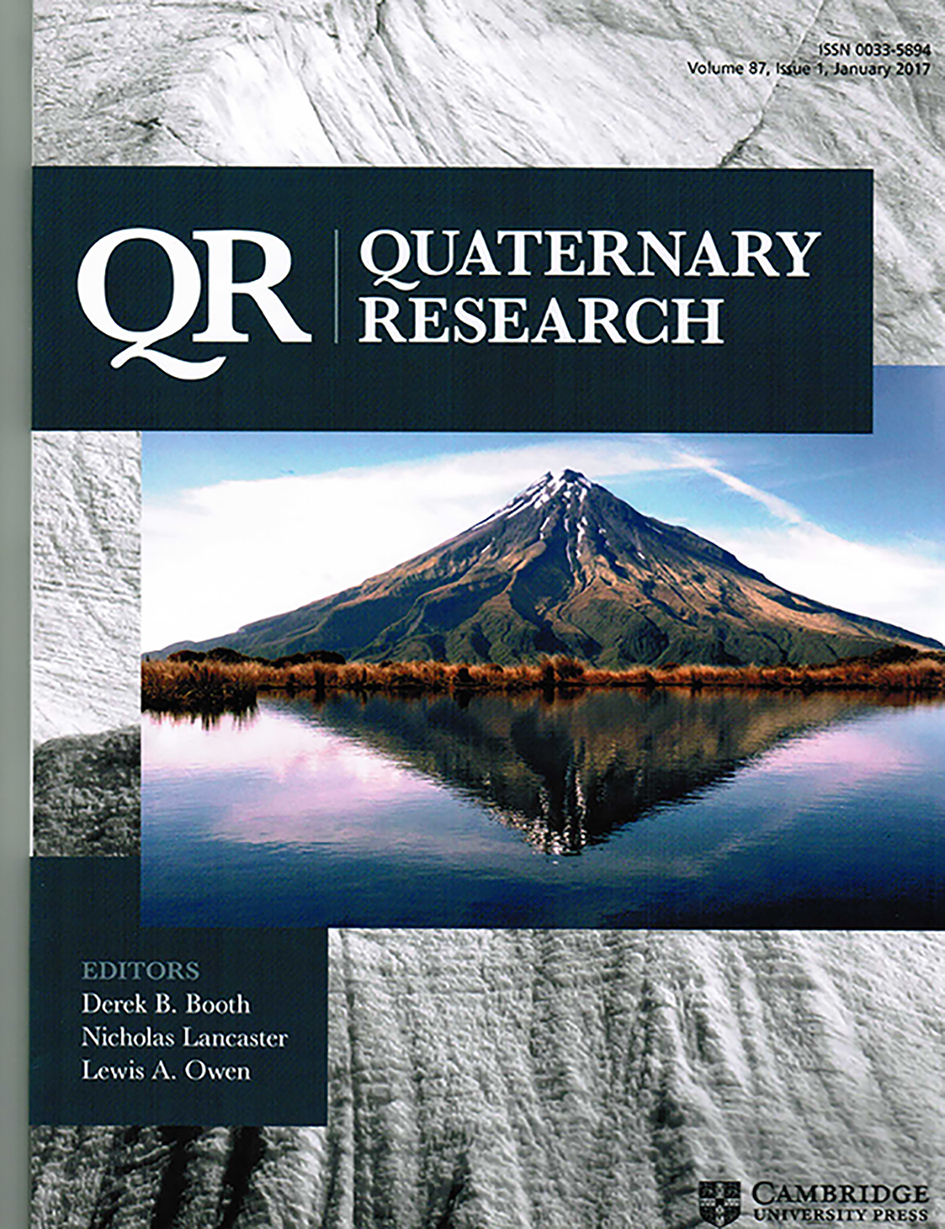
AMQUA Mission and Purposes statements
Please check our News page for information about coming events and announcements.
2024 AMQUA Biennial Meeting
The 28th amqua biennial meeting will be held august 7-11, 2024 in salt lake city and we anticipate another exciting meeting. please see the link below to the meeting and registration website, https://amqua2024.utah.edu/, amqua 2024 awards : congratulations to all the awardees.
Distinguished Career: Stephen Jackson and John Smol
Leadership in Quaternary Sciences: Jacquelyn Gill
Next Generation: Bess Koffman
Eric Grimm for Excellence in Open Science and Data Stewardship: Nicolas Gauthier
Denise Gaudreau for Excellence in Quaternary Research: Gryphen Goss
The American Quaternary Association (AMQUA) is a professional organization of North American scientists devoted to studying all aspects of the Quaternary Period, about the last 2.6 million years of Earth history. Studying the Quaternary is critically important because it has been a time of frequent and dramatic environmental changes, exemplified by growing and decaying continental ice sheets and mountain glaciers. Beyond understanding the forces that shaped our modern environment, studying the Quaternary Period is significant because the environmental changes accompanying past ice ages were the backdrop for global changes in floral and faunal communities, including extinction of a diverse megafauna, and for the evolution of modern humans and their dispersal throughout the world.
AMQUA was founded in 1970 primarily to foster cooperation and communication among the remarkably broad array of disciplines involved in studying the Quaternary Period. Major activities include a biennial meeting, professional awards, partnership with INQUA (the International Quaternary Association), and the Quaternary Times newsletter.
We use cookies to provide you with a better service. By continuing to browse, you agree to accept this - for more information see our cookie policy .
OK - CLOSE THIS NOTICE & CONTINUE

- INQUA Resources

International Union for Quaternary Research
Promoting research on quaternary science.
INQUA Commissions

Early Career Research
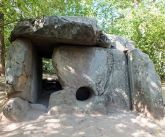
Funding & Awards
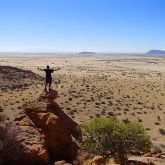
Meetings & Events
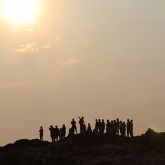
Publications
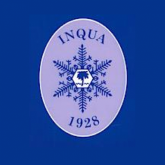
Latest News
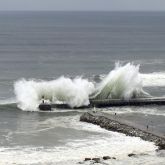
International conference Archaeology and Paleogeography of Central Asia

7th Regional Scientific Meeting on Quaternary Geology

ONSEA Workshop “Coastlines in a changing world”
ONSEA Workshop
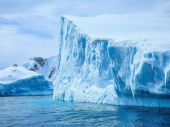
ISC Distinguished Lecture Series: “From the Theory of Ice Ages to IPCC climate projections”
ISC Distinguished Lecture Series

2024 Biennial Meeting of the American Quaternary Association (AmQua)

2024 CANQUA-CGRG Biennial Meeting
CANQUA-CGRG Biennial Meeting

TURQUA - Quaternary Symposium of Turkey
11th biennial meeting on Quaternary studies in and around Turkey
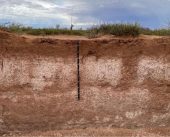
Paleopedology Newsletter
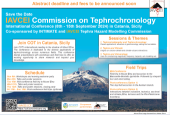
Commission on Tephrochronology (CoT) International Conference
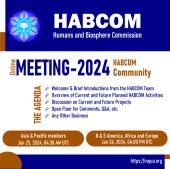
HABCOM Community Meeting
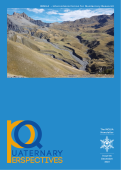
Quaternary Perspectives | December Edition
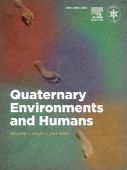
New Elsevier Journal -- Quaternary Environments and Humans

The second circular for the TERPRO INQUA summer school on Active Faults and Volcano-Tectonics
The second circular for the TERPRO INQUA summer school on Active Faults and Volcano-Tectonics, 25-28 Sept., 2023, in Naples, Italy has been published.

TERPRO summer school on Active Faults and Volcano-Tectonics, 25-28 September, Naples (Italy)

3RD CROSSING THE PALAEONTOLOGICAL - ECOLOGICAL GAP - CPEG
International conference - August 28-31, 2023
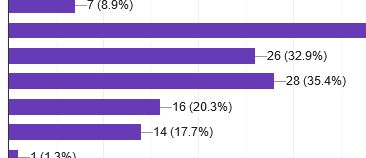
TERPRO election results
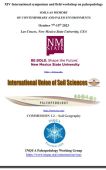
XIV International Symposium & field workshop on Paleopedology
SOILS AS MEMORY OF CONTEMPORARY AND PALEO ENVIRONMENTS
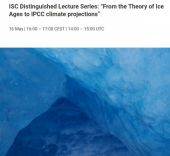
ISC Distinguished Lecture Series: "From the Theory of Ice Ages to IPCC climate projections" - International Science Council
16 May | 16:00 – 17:00 CEST | 14:00 – 15:00 UTC

7th Conference on Regional Climate and Environmental Dynamics
GEOSCIENCE IN THE CARPATHIAN AND BLACK SEA REGION

The First Online International Course On Paleopedology
March 6 to 10th. 2023
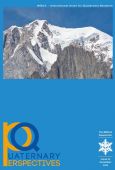
Quaternary Perspectives | December edition
The new issue of QP is out!

The Spotlight project: re-cap and evolution
farewell, The Spotlight!

LEMON Winter School
TERPRO's project LEMON announces its 2023 Winter school:
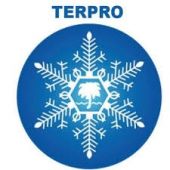
Call for nomination - election of TERPRO commission officers
Nominate candidates for the TERPRO elections
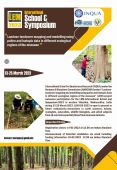
HABCOM LEM - Project International School & Symposium 2023
"Landuse-landcover mapping & modelling using pollen & isotopic data in different ecological regions of the monsoon"

Seeking new INQUA ECR Representatives!
Join INQUA!

"All roads lead to Rome 2023" November Webinar
INQUA Roma 2023 Webinar series

The Spotlight #12
High energy deposits at Lam Son National Park, Thailand

"All roads lead to Rome 2023" October Webinar

The Spotlight #11
Running title: Diatoms in Lake Ohrid during Mid-Pleistocene
Standing Committee for Gender Equality in Science | webinar on 26 October 2022
SCGES, the Standing Committee for Gender Equality in Science, webinar series

The Spotlight #10
Glacial outburst floods, central Poland

"All roads lead to Rome" YouTube Channel
Link to all "All roads lead to Rome" webinars organised by Associazione Italiana Quaternario (AIQUA)
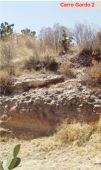
The Spotlight #9
Pedogenic carbonates formation in the Teotihuacan Valley, Mexico

"All Roads Lead To Rome 2023" July Webinar
Faunal exploitation patterns and subsistence strategies in the Middle to Late Palaeolithic of the Southern Levant
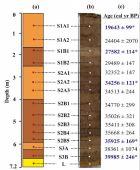
The Spotlight #8
Loess-paleosol sequence to define the climate of 35000 years ago in the Kashmir Valley

"All roads lead to Rome 2023" June Webinar
CSI-Alps: Chasing the Pleistocene Glaciations

The Spotlight #7
Late Holocene hydroclimatic changes in Argentinian shallow lakes
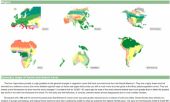
New Resource: A new GIS version of the QEN late Quaternary global paleovegetation atlas
A new GIS version of the QEN late Quaternary global paleovegetation atlas
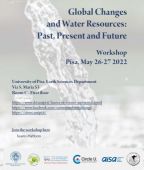
'Global Changes And Water Resources: Past, Present And Future' Workshop
Workshop at the University of Pisa, Earth Science Department May 26-27, 2022
INQUA Roma 2023 Webinar series seminar: 18 May 2022, 3:30 PM CEST
All roads lead to Rome2023
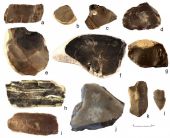
The Spotlight #6
Phosphate minerals for flint provenance

PASES Get-Together meeting
Friday, April 22nd 4pm UTC

Earthquake environmental effects and the ESI-07 scale: an INQUA tale

The Spotlight #5
Geochemistry to reconstruct paleoenvironment and human activities
INQUA Statement On The Ukrainian Crisis
International Union For Quaternary Research (INQUA) Statement On The Ukrainian Crisis
"All roads lead to Rome 2023" March Webinar
Prof. Philip Hughes, the University of Manchester Quaternary glaciations in the Mediterranean region: extent, timing and palaeoclimatic significance


"All roads lead to Rome 2023" February Webinar
"The Italian Association for Quaternary Studies (AIQUA) organizes a webinar series "All roads lead to Rome 2023" in preparation to INQUA Rome2023.
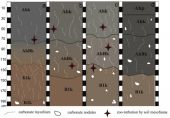
The Spotlight #4
Bronze Age environments from paleosol analysis

NEW!!! INQUA Monthly Newsletter
INQUA celebrates the 1st issue of INQUA’s Monthly Newsletter
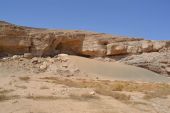
The Spotlight #3
Speleothem growth to unravel humidity patterns in Egypt
INQUA Roma 2023 Webinar series seminar:12 January 2.30 PM CEST
All roads lead to Rome 2023

The Spotlight #2
Soil analysis to reconstruct the Late Quaternary environmental history in NW Siberia
2nd Neptune-INQUA Workshop: 2nd December 2021
Update from the NEPTUNE Project

INQUA Roma 2023 Webinar series seminar: 26 November 3 PM CEST
The sir nicholas shackleton medal for outstanding young researchers nominee talks.
Sir Nicholas Shackleton Medal for Outstanding Young Researchers
Loessfest conference announcement
INQUA Loess and Pedostratigraphy Working Group
New faculty position in zooarchaeology
New faculty position in zooarchaeology, in the Anthropology Department at Texas A&M University
Introduction to the Shackleton Medal nominees

Announcement: Ice Core Early Career Researchers Workshop (ICECReW)
Ice Core Early Career Researchers Workshop (ICECReW) sponsored by the U.S. Drilling Program

Release of: America's Geoheritage II: Identifying, Developing, and Preserving America's Natural Legacy
The National Academies of Sciences, Engineering, and Medicine have released the proceedings of the workshop America's Geoheritage II: Identifying, Developing, and Preserving America's Natural Legacy

The Spotlight #1
Intensity estimate for the 2001 Bhuj and 1819 Allah Bund earthquakes

Quaternaire 13 meeting - Strasbourg 14-18 March 2022
The Q13 meeting will take place in Strasbourg from 14-18 March 2022
Job advert: The French Institute of Pondicherry (IFP) Department of Ecology
Work at The French Institute of Pondicherry

New ECR Chair!
Nivedita Mehrotra (Palcom) elected as ECR Chair
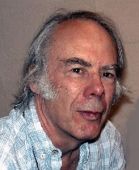
Sir Nicholas Shackleton Medal for outstanding young Quaternary scientists 2021 award
Call for Nominations for the Shackleton Medal 2021
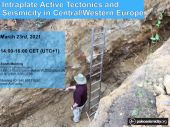
Workshop Intraplate Active Tectonics and Seismicity in Central/Western Europe, 23 March, 2021
Annual workshop on intraplate tectonics and seismicity in Europe, this year via zoom
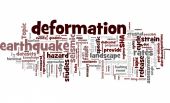
EDITH Kickoff Meeting online: 14-16 April 2021
TERPRO's EDITH project will run its kickoff meeting online from 14-16 APril, 2021

AFEQ-CNF Field trip
AFEQ-CNF Field excursion to the eastern Pyrenees

JOHN KUTZBACH - 1937-2021
Passing of Professor Emeritus John E. Kutzbach

Summer school on geochronology and webinar on hydraulics
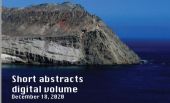
This was the virtual PATA short meeting 2020
On 18 December we held a short virtual PATA meeting, since the in-person meeting to be held in Chile had to be postponed to 2021.

How to access the PATADays virtual meeting, Dec. 18, 2020
How to access the virtual PATA meeting

TERPRO PATA Days Webinar on 18 Dec, 2020
TERPRO PATA Days Webinar on 18 Dec, 2020, to keep the spirit alive

Fault2SHA 5th Workshop - Online
The 5th Fault2SHA Workshop will be held online on 12th & 13th November, and 2nd December, 2020. This workshop is not organized by TERPRO, but is relevant for the TERPRO earthquake community.

PATA Days postponed to November 2021
Peribaltic meeting postponed
Peribaltic meeting postponed to 8-14 May 2021

AmQua 50th Anniversary Zoom conference
AmQUA conference

INQUA's new Twitter account | @INQUA
INQUA on Twitter

New abstract submission deadline for PASES2020: 15 June!
Extended deadline
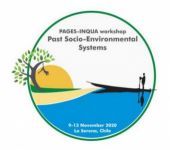
PAGES-INQUA ECR Workshop on Past Socio-Environmental Systems - 2nd circular
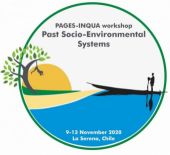
PASES 2020 website
PASES website

PATA Days in Chile & other interesting meetings
Updates on the PATA Days website and deadlines, the joint IGCP639 & ITFS meeting, and the 6th Regional Scientific Meeting on Quaternary Geology in Slovenia
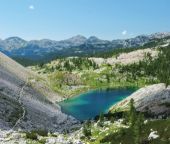
6th Regional Scientific Meeting on Quaternary Geology: Seas, Lakes and Rivers
The meeting is dedicated to researchers working on Quaternary geology, geomorphology, stratigraphy and related subjects.
New ECR email address
We want to hear from you!

Int'l Summer School Glacial Megaflood Landforms and Sediments, spring 2021, Suwalki, NE Poland
Summer School: Glacial Megaflood Landforms & Sediments
INQUA PERIBALTIC Working Group Int'l Field Symposium: Quaternary evolution of the Eastern Baltic region: from glaciations and interglacials to the recent global warming, 4-10 October 2020
Peribaltic WG Symposium

PAGES-INQUA workshop
PASES: Past Socio-Environmental Systems
New ECR Representatives
New TERPRO ECR representatives
New TERPRO ECRs: Francesca Ferrario and Guido Stefano Mariani
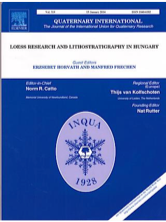
Quaternary International 500, a milestone to be celebrated
Quaternary International 500, an extra-Special Issue of the official journal from the International Union for Quaternary Research (INQUA).
CONFERENCE: FROM THE NORTH SEA LOWLANDS TO THE CELTIC SHELF EDGE: RECONSTRUCTING INTERCONNECTED ENVIRONMENTS FOR THE PAST 500 KYRS
Interdisciplinary conference on Middle-Pleistocene to Late-Holocene geological processes and landscape development from the North Sea to the Celtic Margin. November 18th to 20th 2019 at Media Plaza in Utrecht, the Netherlands.
INQUA is glad to announce the results of Commission Officer elections for the 2019-2023 inter-congress period.
The voting period for the Commission Officer elections took place from 15th January to 1st February, where commission members had the opportunity to elect their representatives for the 2019-2023 inter-congress period.
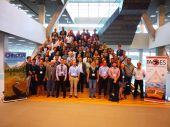
ISLR18 Conference: Impacts of sea-level rise from past to present
The first INQUA-PAGES Conference for Early-Career Researchers 2018 was a complete success
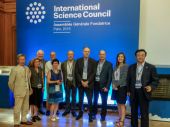
INQUA at International Science Council (ISC)
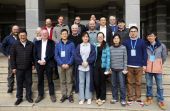
INQUA Executive Committee Meeting 2018 in Beijing, China
The 2018 INQUA Executive Committee Meeting was held from 10 to 15 March in partnership with the Chinese Association for Quaternary Research (CHIQUA).
Dr. Chenxi Xu, appointed ECR representative for TERPRO Commission
We are happy to inform that Dr. Chenxi Xu has been appointed as our new ECR representative for TERPRO
LacCore/CSDCO Drilling and Coring Summer Institute (DCSI)
The Drilling and Coring Summer Institute (DCSI), a nine-day comprehensive training course.
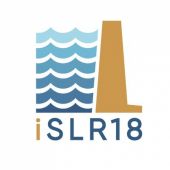
INQUA-PAGES ECR conference: Impacts of sea-level rise from past to future (iSLR18)
DEADLINE EXTENDED: 1 May 2018!. INQUA and PAGES will conduct a four-day conference for early-career researchers, titled "Impacts of sea-level rise from past to future (iSLR18)", in Utrecht, The Netherlands, from 26-29 August 2018.
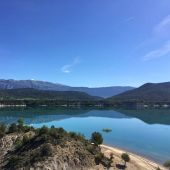
PAGES Young Scientist Meeting 2017 In Morillo De Tou
This is a guest post by Florian Muthreich, PhD student at the Department of Biology, University of Bergen.
International Focus Group On Tephrochronology And Volcanism (INTAV)
INTAV is an International focus group within INQUA that has been both a driver and vehicle for one of the major avenues for the advancement of Quaternary science in recent times.
INQUA's basic goal - promoting improved communication and international collaboration in basic and applied aspects of Quaternary research - is achieved mainly through the activities of its Commissions. INQUA has five Commissions. For more information, click on the link below.

Upcoming Meetings
PATA Days 2024
12th INQUA PATA Days will be held in Los Andes, Chile, 6-11 October, 2024
Los Andes (Chile) 06 Oct 2024 - 11 Oct 2024
Executive, Council, Members & Honorary Life Members
The INQUA Executive Committee is the Union’s presiding body.
International Council
Approves INQUA’s remit, business, policies, organisation, statutes & byelaws.
INQUA Members
National & regional members & many thousands of scientists from around the world.
INQUA Life Fellows
This is a list of Honorary Life Fellows of INQUA from across the world.
UW W Logo Quaternary Research Center
- College of the Environment Logo Text
- University of Washington Logo Text
Quaternary Research Center
The 50-year-old QRC is a community of scholars collaborating and fostering interdisciplinary environmental research at the University of Washington through strategic investments in seed grants, expeditions, seminars, workshops, and the publication of the journal, Quaternary Research.
Quaternary research: an interdisciplinary journal

- Published: //
Celebrating 50 years of UW’S Quaternary Research Center!
The Center publishes Quaternary Research , a leading international journal of Quaternary science for 50 years. Content includes studies from geology, geophysics, archaeology, paleontology, oceanography and more. The journal features interdisciplinary articles that present previously unpublished research results and comprehensive reviews.

Get your research funded!
Do you have a project that needs a jumpstart? Or supplementary help? The QRC is proud to sponsor amazing research conducted by QRC members and/or their students!
Former QRC Director, Estella Leopold, passes away at the age of 97
Below is an obituary from the Leopold Foundation: Estella Leopold was “a pioneer among researchers and conservationists, an eminent role model for women in science, and an all around amazing, kind, and generous human being.” – Caroline Strömberg Link: https://www.aldoleopold.org/blogs/a-turning-of-the-page-in-the-leopold-legacy David Williams also wrote a biography on Estella in 2010: Link: https://www.historylink.org/File/9378
QRC Quarterly Newsletter – Fall 2023
As we head into a new academic year I want to highlight a couple exciting developments within the QRC — download a copy of the newsletter, or view it below.
Introducing QRC Reading and Writing Groups
The QRC is at its best when we are able to come together to meet, think, work, and support one another.
No upcoming events.
Additional events can be found on the College of the Environment Events Calendar .
Quaternary Research Center
https://qrc.uw.edu
Since its inception, the QRC has been a hub of interdisciplinary research, drawing together UW faculty, students, associates, and visiting researchers in the study of everything from tectonics to climate, hydrosphere to ecosystems, and human evolution/adaptations to environmental impacts over the past 2.6 million years.
The “ Quaternary ” refers to the last 2.6 million years of Earth history, corresponding to the great ice ages and intervening interglacial periods. This interval embraces the history of humanity from the first stone tool users in Africa, human colonization of the habitable surfaces of the planet, agricultural innovations, and the economic diversification and intensifications that support a current population over 7 billion people. It encompasses major transformations of the Earth’s ecosystems through intervals of dramatic cooling and warming and anthropogenic habitat modification. Today, human “niche construction” has modified the majority of the earth’s surface, engendering significant impacts on the planet’s atmosphere, geosphere, hydrosphere, biosphere, and social systems.
Knowledge of environmental changes in the Quaternary facilitates an understanding of earth history in relation to the modern environment and future change. This link of the past, present, and future is fundamental to the interdisciplinary mission of the QRC. Processes set in motion through the Quaternary culminate today, in both intended and unintended anthropogenic impacts, at a global scale. Understanding this period thus requires science that considers the unique and interacting dynamics of atmospheric, aquatic, earth, biotic and social systems in interdisciplinary and comparative perspectives. Understanding the history, evolution, and variability of these linked systems forms the core mission of the QRC .
To that end, the QRC also embraces the study of a deeper time and even processes on other planets as they shed light on Earth’s Quaternary patterns and processes (e.g., processes and impacts of rapid warming in the Eocene or the geomorphological understanding of surface processes on Mars have implications for the future of a warming earth). This attention to comparative and time transgressive case studies at varying scales, centered on, but not limited to, the past 2.6 million years, makes the past relevant to the present and to our efforts to plan for a desirable future.
Members of the QRC are UW faculty, researchers, post-docs and students, as well as specially honored friends of the QRC from other institutions and even countries. If you are interested in becoming a member, please visit Becoming a Member for more information.
Core Services Offered
Quaternary Research: An Interdisciplinary Journal
Funding Information
Funding is only available to QRC members
Reporting Structure
QRC Director reports to Dean of the College of the Environment
Related UW Entities
Earth and Space Sciences, Anthropology, Aquatic and Fishery Sciences, Atmospheric Sciences, Biology, Burke Museum, Civil and Environmental Engineering, Environmental and Forest Sciences, Joint Institute for the Study of the Atmosphere and Ocean (JISAO), Marine and Environmental Affairs, Oceanography, Urban Design and Planning, and Interdisciplinary Arts and Sciences at UW Bothell
External Partners
Institute of Earth Environment, Chinese Academy of Sciences; USGS, University of British Columbia, Nuka Research and Planning, Simon Fraser University, University of Calgary, Seattle University, Edmonds Community College, Ground Truth Alaska, Washington Sea Grant
Center Details
| Directors: | |
| Location: | Johnson Hall |
| Year Started: | 1969 |
| Administrator / Program Manager | |
| Administering College/School: | |
| P.I. Home Department: | Earth and Space Sciences |
| Faculty Involvement: | 53 |
University of Washington Office of Research
Or support offices.
- Human Subjects Division (HSD)
- Office of Animal Welfare (OAW)
- Office of Research (OR)
- Office of Research Information Services (ORIS)
- Office of Sponsored Programs (OSP)
OR Research Units
- Applied Physics Laboratory (APL-UW)
- WA National Primate Research Center (WaNPRC)
Research Partner Offices
- Corporate and Foundation Relations (CFR)
- Enivronmental Health and Safety (EH&S)
- Grant and Contract Accounting (GCA)
- Institute of Translational Health Sciences (ITHS)
- Management Accounting and Analysis (MAA)
- Post Award Fiscal Compliance (PAFC)
Collaboration
- Centers and Institutes
- Collaborative Proposal Development Resources
- Research Fact Sheet
- Research Annual Report
- Stats and Rankings
- Honors and Awards
- Office of Research
© 2024 University of Washington | Seattle, WA
- Apply to UMaine

Climate Change Institute
Graduate student documents chilean research voyage with photography – m. miles.
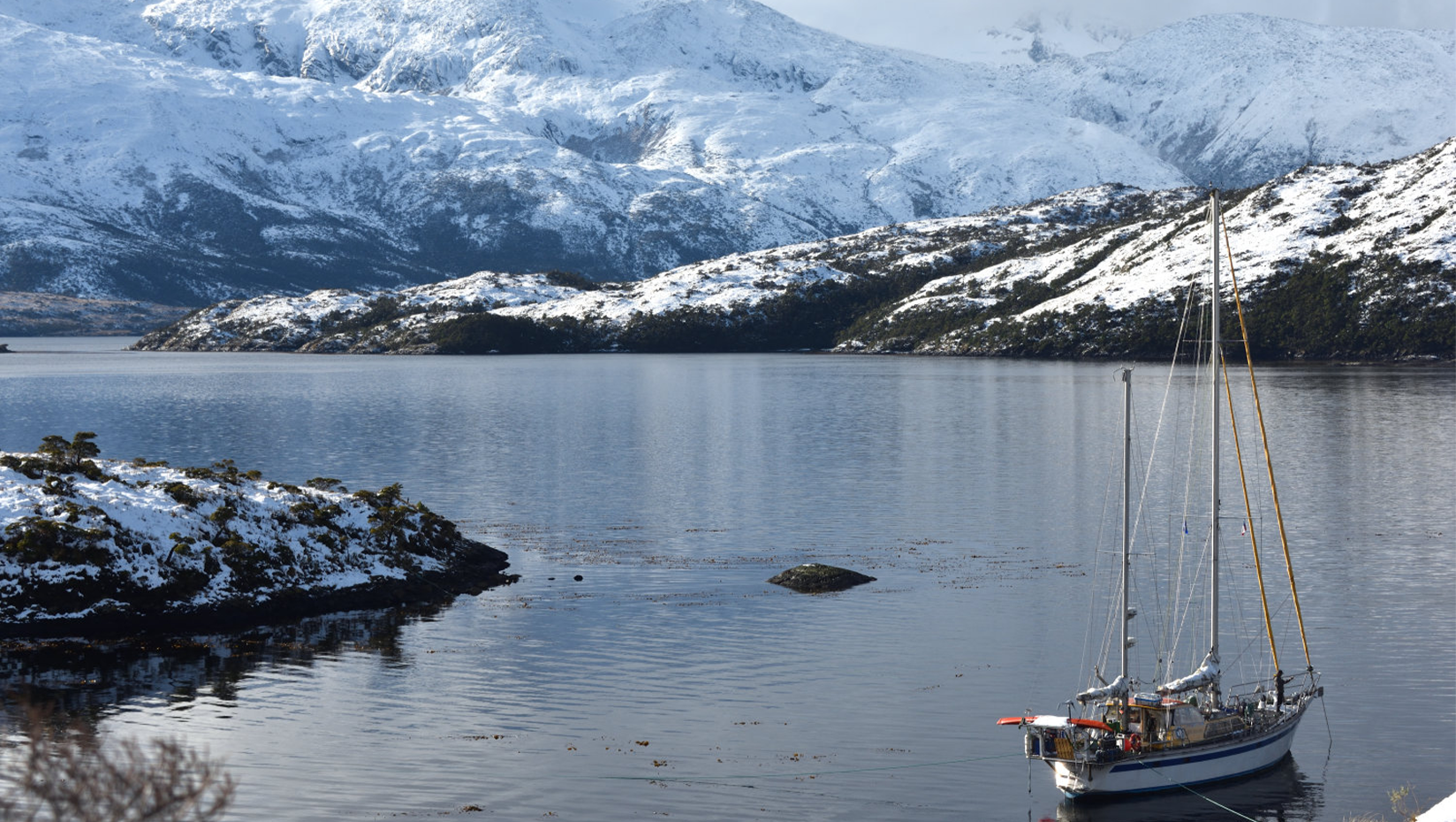
Graduate student documents Chilean research voyage with photography
The boat where Maraina Miles lived for a month was equipped with a small oven large enough for a tray of brownies, a four-burner gas stove and a mini refrigerator. Most of the perishables, such as avocados and cabbage, were stored on the top deck, kept cool by the Chilean weather and chest freezers.
Despite limited space and resources, Miles said one member of the crew, an Argentinian man, had previously owned a restaurant and prepared memorable meals for the group of about 10 researchers and students. Several, including Miles who is a Ph.D. candidate, were from the University of Maine, joined by members from other universities in the U.S. and South America.
They trudged through bogs, hiked along cliffs and lived on a 66-foot sailboat named the Ocean Tramp to acquire data on the most recent ice age. Miles learned about glaciers and lent a hand with fieldwork. By the time she was back home, she also had over 2,000 snapshots from a camera her mother had gifted her to remember how it felt to wade through muck and push a large probe into the ground.
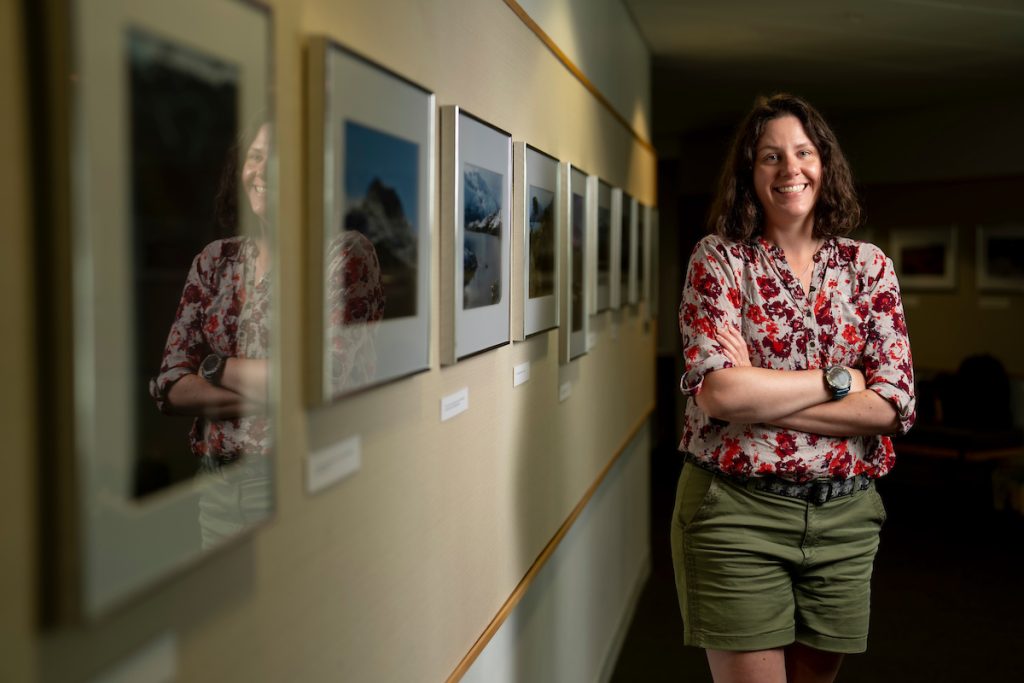
Thirty-one of Miles’ documentary photos are framed and exhibited at UMaine’s Hudson Museum, where they will be on display until the start of the fall 2024 semester. Coming from an undergraduate background in fine arts, she had participated in exhibitions before but said she doesn’t feel the same type of pressure with her photo display. It’s there to give insight into their fieldwork in Chile — the sweaty parts and the scenery — not to be judged for the quality of content and aesthetics.
Before Miles came to UMaine in 2018, she completed a bachelor’s degree in sculpture and worked at the National Aviary in Pittsburgh, Pennsylvania. Working alongside people who had studied environmental sciences encouraged her to go back to school and pursue a second undergraduate degree in geology.
In her graduate studies at UMaine, she decided to specialize in the area of glaciers — Earth’s natural sculptures and a long-time interest of hers — and has focused her fieldwork in Antarctica and Baxter State Park. After graduating in May 2025, she hopes to stay in academia as a postdoc or educator. She’ll continue taking pictures as a hobby and to document her work with the environment.
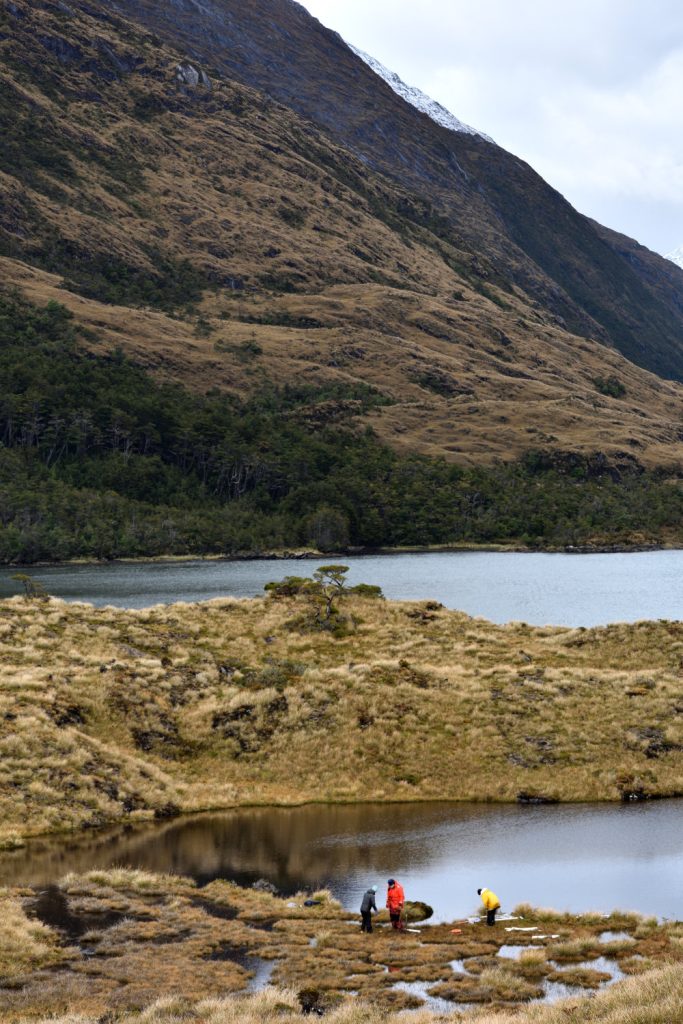
Her photos in Chile show the beauty of undeveloped nature. The team’s work required lengthy hikes into places not frequently visited by people. “There were some places that we got up into, and I wondered if anyone had ever been there before,” Miles said.
Once their boat left port from Puerto Williams, Chile and sailed west through the Beagle Channel with humpback whales and Peale’s dolphins, Miles said they passed one or two towns before settling into a section of Alberto de Agostini National Park that was a day and a half journey by sailboat. Tight-quartered bunk cabins had doors for privacy, but closing them meant trying to sleep in a room too stuffy, hot and damp to get comfortable.
“You’re out in the middle of nowhere. There’s no other people for like 100 miles, or so it seems when you’re out there,” Miles said. “But you’re stuck with 10 other people around you all the time. I didn’t mind it because I’ve had other field experiences like that.”
Brenda Hall, who led the trip in spring 2023, said their goal as researchers was to document the end of the last ice age as represented by shrinking glaciers in the Cordillera Darwin mountain range, which has peaks that reach 8,000 feet. Hall, a professor of quaternary and glacial geology at UMaine, said determining the timing, magnitude and rate of the end of the last ice age helps scientists predict future climate behavior and better understand what happens on Earth as the climate warms.
Hall had previously worked with Miles in Antarctica studying glaciers. Since the work was similar, Hall invited Miles to Chile to help with handling the equipment and taking samples. Miles brought her camera, like she has for all of her field excursions, as entertainment.
“I think she captured the environment really well and our work on the landscape,” Hall said. “I personally like the pictures of us working, because as the one working, I never really got a look at it before.”

Turning moments to memories
A photo of one of the bogs where the group based research showed six people carrying roughly 150 pounds of equipment to draw samples from the Earth’s surface and reminds Miles of when the soft ground sucked her muck boot into it. She eventually recovered the boot but not before soaking her sock in spongy sphagnum moss.
The team used probes to measure ground depth in the bog, then took sediment samples to gather data on when ice last covered the area.
“The theory is that the more that you grunt as you’re trying to push the probe down, the better it works,” Miles said. “There were three of us there trying to push this thing down and yelling, and then all of a sudden a condor popped up over the side of the mountain. I think he thought that we were dying animals and that lunch was about to be served.”
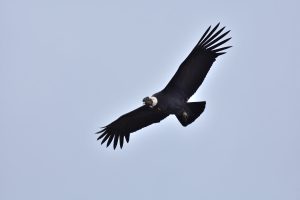
One of her photos from that day shows an Andean Condor — a type of vulture that can stand 4 feet tall with a 12-foot wingspan — flying above them, marking its next meal. Miles said she missed the opportunity to take a picture of the condor, the largest flying bird in the world, from above. She couldn’t get her camera out of her backpack quickly enough as she and the group hiked down a cliff.
Displayed next to the condor are photos of a black-crowned night heron perched on the side of a boat with its red eyes peering, Magellanic Cormorants nested on rock and sea lions lounging.
A Hudson Museum cooperating curator heard about Miles’ work through her husband and connected Miles with the director, Gretchen Faulkner, to arrange the exhibit. Faulkner said the museum regularly showcases exhibitions in its Minsky Culture Lab that feature UMaine faculty and graduate student research.
“Through these exhibitions, the public, including elementary and secondary school students and the university community, has an opportunity to learn about groundbreaking fieldwork and research about the impact of climate change, past civilizations and artistic traditions from around the world,” Faulkner said.
Last updated 20/06/24: Online ordering is currently unavailable due to technical issues. We apologise for any delays responding to customers while we resolve this. For further updates please visit our website: https://www.cambridge.org/news-and-insights/technical-incident
We use cookies to distinguish you from other users and to provide you with a better experience on our websites. Close this message to accept cookies or find out how to manage your cookie settings .
Login Alert

- < Back to search results
- Quaternary Research
FirstView articles
Quaternary research, an interdisciplinary journal.
- Submit your article
- Announcements
This journal utilises an Online Peer Review Service (OPRS) for submissions. By clicking "Continue" you will be taken to our partner site http://www.editorialmanager.com/qr . Please be aware that your Cambridge account is not valid for this OPRS and registration is required. We strongly advise you to read all "Author instructions" in the "Journal information" area prior to submitting.
- Information
- Journal home
- Journal information
- 50th Anniversary issue
- Editors and Advisory Board
- Latest issue
- Open access articles
Refine listing
Actions for selected content:.
- View selected items
- Save to my bookmarks
- Export citations
- Download PDF (zip)
- Save to Kindle
- Save to Dropbox
- Save to Google Drive
Save content to
To save this undefined to your undefined account, please select one or more formats and confirm that you agree to abide by our usage policies. If this is the first time you used this feature, you will be asked to authorise Cambridge Core to connect with your undefined account. Find out more about saving content to .
To save this article to your Kindle, first ensure [email protected] is added to your Approved Personal Document E-mail List under your Personal Document Settings on the Manage Your Content and Devices page of your Amazon account. Then enter the ‘name’ part of your Kindle email address below. Find out more about saving to your Kindle .
Note you can select to save to either the @free.kindle.com or @kindle.com variations. ‘@free.kindle.com’ emails are free but can only be saved to your device when it is connected to wi-fi. ‘@kindle.com’ emails can be delivered even when you are not connected to wi-fi, but note that service fees apply.
Find out more about the Kindle Personal Document Service.
Save Search
You can save your searches here and later view and run them again in "My saved searches".
Corrigendum
Was there a nonglacial episode in the western hudson bay lowland during marine isotope stage 3 – corrigendum.
- Tyler J. Hodder , Michelle S. Gauthier , Martin Ross , Olav B. Lian
- Published online by Cambridge University Press: 05 June 2024 , p. 1
- You have access Access
- Open access
- Export citation
Research Article
Systematics and paleobiogeography of quaternary corals from cabo verde archipelago.
- Anne-Sophie Reeb , Ana Cristina Rebelo , Ricardo S. Ramalho , José Madeira , Michael W. Rasser
- Published online by Cambridge University Press: 20 May 2024 , pp. 1-15
- Get access Check if you have access via personal or institutional login Log in Register
Although true coral reefs have seldom been reported from the fossil record of the Cabo Verde Archipelago, many single fossil corals and coral colonies can be found reworked in tsunami deposits and in raised marine terraces onshore on these islands. This study provides the first detailed survey of fossil corals from 7 of the 10 islands of the archipelago, sampled from Pleistocene marine terraces and tsunami deposits. A total of 168 scleractinian corals were analyzed and identified to genus and/or species level. Thirteen taxa from the families Acroporidae, Dendrophylliidae, Faviidae, Pocilloporidae, Poritidae, and Rhizangiidae were identified. The zooxanthellate fossil corals found on the Cape Verde Archipelago likely migrated from the Caribbean to the West African coast, while azooxanthellate species likely originated from the Indo-Pacific. Differences between present-day coral assemblages and fossil assemblages are assumed to result from changing environmental factors. Although reef-building taxa occur (e.g., Porites ), extensive reef frameworks are absent.
Updated chronology for Peoria Silt (loess) accumulation in Illinois and western Indiana from radiocarbon dating of terrestrial gastropod shells
- David A. Grimley , Henry M. Loope , Peter M. Jacobs , T. Andrew Nash , Sarah N. Dendy , Jessica L. Conroy , B. Brandon Curry
- Published online by Cambridge University Press: 17 May 2024 , pp. 1-19
Based on calibrated radiocarbon ages of terrestrial gastropod shells (Succineidae, Discus , Stenotrema , Webbhelix ), the chronology of Peoria Silt (loess) deposition in the Central Lowlands is updated. These taxa provide reliable ages (within ~0.2 ka), based on historical shell dating, shell-organic age comparisons, and stratigraphic consistency. A compilation of 53 new and 36 published Peoria Silt shell ages (calibrated), from 12 localities, date from 30.0 to 17.4 ka. Proximal (fossiliferous) loess from 10 sections had mean loess accumulation rates of 0.6–2.2 mm/yr. Study sites along the upper Mississippi, Illinois, to mid-Mississippi, and Ohio-Wabash Valleys suggest Peoria loess accumulated from ~27 to 15 ka, ~29 to 18 ka, and ~30 to 18 ka, respectively. The cessation age for Peoria Silt, based on surface extrapolations, is ~1–6 ka earlier than some prior Illinois estimates, even assuming slower loess accumulation in the modern solum. Younger loess in northwestern Illinois likely reflects, in part, Superior and Des Moines Lobe glacial-meltwater sediment, and Iowan Erosion Surface inputs to the upper Mississippi Valley, after the Lake Michigan Lobe receded. Furthermore, stronger winds, drier conditions, and reduced vegetation cover in valley deflation areas may have favored higher accumulation rates and later loess deposition in northwestern relative to southeastern areas.
Early Pleistocene upper bathyal communities in fault-bounded paleovalleys of the island of Rhodes (Greece)
- Pierre Moissette , Frédéric Quillévéré , George Kontakiotis , Danae Thivaiou , Efterpi Koskeridou , Assimina Antonarakou , Hara Drinia , Mihaela Melinte-Dobrinescu , Jean-Jacques Cornée
- Published online by Cambridge University Press: 16 May 2024 , pp. 1-21
Two sediment sections are investigated at Cape Arkhangelos, island of Rhodes, where Pleistocene marine sediments crop out in horsts and grabens of a Mesozoic basement. There, hemipelagic sediments characterized by upper bathyal communities are atypically mixed with much shallower faunal components because they were deposited close to rugged coastal landforms. Biostratigraphic analyses show that the sections were deposited between 1.8 and 0.9 Ma, and between 1.8 and 1.6 Ma, respectively. By combining the planktonic/benthic foraminiferal ratio with 31 bathymetric indicators chosen among extant species of benthic foraminifera, mollusks, and bryozoans, we show that relative sea-level fluctuations can be reconstructed in these atypical settings despite the proximity of steep slopes that favored transportation of allochthonous fauna. The shallow-water components (including gravels and calcareous algae) were transported downslope by the combined action of gravity, currents, and tectonic disturbance that promoted drowning (with a maximum flooding recorded at ca. 1.7 Ma) and then uplift of fault-bounded paleovalleys that formed during the Early Pleistocene. Abrupt facies changes and age differences between sections have been triggered by the irregular paleotopography of the Mesozoic basement, which fostered differential depositional settings, with outer to middle neritic deposits above the horsts and upper bathyal deposits in paleovalleys.
Late glacial to Holocene fluvial dynamics in the Upper Rhine alluvial plain, France
- Mubarak Abdulkarim , Laurent Schmitt , Alexander Fülling , Claire Rambeau , Damien Ertlen , Daniela Mueller , Stoil Chapkanski , Frank Preusser
- Published online by Cambridge University Press: 16 May 2024 , pp. 1-23
High-resolution sedimentological and geochronological investigations of paleochannel systems in the Ried Central d'Alsace (northeastern France) allow for the reconstruction of the late glacial and Holocene fluvial evolution of this section of the Upper Rhine alluvial plain. During the Oldest Dryas, the landscape featured a dominant braided Rhine system and, to a lesser extent, a braided Fecht system. The shift to the Bølling-Allerød saw a narrowing of the Rhine's active channel belt, the development of a complex channel pattern, and the genesis of the Ill River. The river channel patterns remained unchanged during the Younger Dryas. In the Early Holocene, the Rhine's active belt narrowed further, and the Rhine and Ill Rivers developed braided-anastomosing and anastomosing channel patterns, respectively. Throughout the Holocene, both rivers maintained their channel patterns while migrating east and west across the alluvial plain, respectively. In the late glacial, fluvial dynamics in this section of the Upper Rhine plain were primarily influenced by climate-related environmental and hydrogeomorphological changes. Conversely, during the Holocene, the evolution of the fluvial hydrosystems was driven by a complex interaction of climatic and non-climatic factors, including human activity at the catchment scale, alluvial plain architecture, and local neotectonics.
Chronology of the early transgressive phase of Lake Bonneville
- Charles G. Oviatt , Vicki A. Pedone
- Published online by Cambridge University Press: 04 April 2024 , pp. 1-8
Radiocarbon and uranium-thorium dating of microbialites and penecontemporaneous cements in a microbialite mound at Death Point at Lakeside, Utah, on the shore of Great Salt Lake, Utah, call for a revision of the Lake Bonneville hydrograph. At about 30,000 cal yr BP, the lake experienced an abrupt rise of about 20 m, then dropped back down to levels near or slightly higher than the modern average elevation of Great Salt Lake. Over the ensuing ~6000 yr the lake experienced a series of fluctuations, up to levels a few tens of meters higher than the modern average Great Salt Lake, then down again. The exact timing and amplitudes of those fluctuations are not known, but importantly, the lake did not rise to levels near the Stansbury shoreline (~80 m higher than Great Salt Lake) until after about 24,000 cal yr BP. After the Stansbury shoreline, the lake rose almost 200 m to its highest level at the Bonneville shoreline by about 17,500 cal yr BP. This interpretation is different from previously published hydrographs, many of which show a relatively steady rise to near the Stansbury shoreline between 30,000 and 25,000 cal yr BP.
Open paleoenvironment and dry climate in south India immediately before the Youngest Toba Tuff eruption (~75 ka) are suggested by Vondrichnus structures at the Jwalapuram locality, Jurreru valley
- Published online by Cambridge University Press: 25 March 2024 , pp. 1-9
The Younger Toba Tuff (YTT) eruption is regarded as one of the largest of its time and possibly responsible for changing past climate and vegetation from C 3 to C 4 in the Indian subcontinent. A paleosol constituting a Toba pre-tephra horizon at the Jwalapuram locality, exhibits the preservation of biogenic structures identified as Vondrichnus planoglobus and Vondrichnus obovatus. This study investigated their paleoecological and paleoenvironmental significance. These structures are hard and compact, rounded to sub-rounded, spherical to sub-spherical bodies with empty chambers, surrounded by carbonate layers, and preserved in close proximity to termite pipes and nests and rhizolith structures. Their occurrence in the Jwalapuram area is significant, as the locality has been well documented as suitable for reconstruction of past climate and vegetation in light of the impact of the YTT eruption. Based on the present findings, we assume that the investigated locality would likely have an insect population and bush to scrub vegetation, indicating a dry environment immediately before the YTT eruption.
Cliff recession geodynamics variability and constraints within poorly consolidated landslide-prone coasts in the southern Baltic Sea, Poland
- Jerzy Jan Frydel
- Published online by Cambridge University Press: 21 March 2024 , pp. 1-17
This study identifies the reasons for geodynamics variability of the coastal system within two cliff-shore sections of the southern Baltic Sea (SBS). The comparative analysis included distinct moraines and their foregrounds near the open sea (S1) and within the Gulf of Gdańsk (S2). Short-term trends indicate a direct link between landslide occurrence and increased cliff retreat. Long-term (total) values were obtained by developing the 4F MODEL for large-scale applications, based on the analysis of remote sensing and hydroacoustic data (to determine the extent of shore platforms), the modelling of higher-order polynomial functions describing their extent, followed by the integral calculus of the indicated functions within the open-source Desmos environment. The retreat dynamics for individual landslides (S1) was an order of magnitude higher (m/yr) than the average for the whole cliff section (0.17 ± 0.008 m/yr), which correlates well with medium- and long-term development tendencies and recession dynamics, revealed by the numerical modelling method, since approximately 8 ka b2k, years before 2000 CE (at S1 = 0.17 ± 0.020 m/yr, at S2 = 0.11 ± 0.005 m/yr). While the approach described in this paper can reveal, project, and simulate the dynamics of past and future trends within other cliffed coasts shaped in tideless conditions, it also proves stable moraine erosional responses to sea-level rise since the Mid-Holocene.
Modeling post-Pleistocene megafauna extinctions as complex social-ecological systems
- Miriam C. Kopels , Isaac I. Ullah
- Published online by Cambridge University Press: 14 March 2024 , pp. 1-14
The role of human hunting behavior versus climate change in the mass extinction of megafauna during the Late Quaternary is much debated. To move beyond monocausal arguments, we treat human–megafauna–environment relationships as social–ecological systems from a complex adaptive systems perspective, to create an agent-based model that tests how human hunting may interact with environmental stress and animal life history to affect the probability of extinction. Using the extinction of Syncerus antiquus in South Africa at 12–10 ka as a loose inspirational case study, we parameterized a set of experiments to identify cross-feedbacks among environmental dynamics, prey life history, and human hunting pressure that affect extinction probability in a non-linear way. An important anthropogenic boundary condition emerges when hunting strategies interrupt prey animal breeding cycles. This effect is amplified in patchy, highly seasonal environments to increase the chances of extinction. This modeling approach to human behavior and biodiversity loss helps us understand how these types of cross-feedback effects and boundary conditions emerge as system components interact and change. We argue that this approach can help translate archaeological data and insight about past extinction for use in understanding and combating the current mass extinction crisis.
Cryogenic features and stages in Late Quaternary subaerial sediments of the Lower Volga region
- N.A. Taratunina , R.N. Kurbanov , V.V. Rogov , I.D. Streletskaya , T.A. Yanina , D.A. Solodovnikov , T. Stevens
- Published online by Cambridge University Press: 11 March 2024 , pp. 1-15
Situated at the southernmost limits of the late Pleistocene Eurasian permafrost zone, the loess–paleosol sequences of the Lower Volga region contain numerous traces of cryogenesis. Cryogenic features are represented by thin vertical wedges in loess and paleosols, and involutions and wedges in alluvial deposits. Here we describe and interpret four stages of cryogenesis during the late Pleistocene, based on analysis of cryogenic structure morphology, morphoscopy of quartz grains, and micromorphology of subaerial sediments, in addition to calculation of the Cryogenic Weathering Index and a new luminescence chronology derived from published ages. These stages differ in type and distribution of cryostructures and formed in different paleogeographic conditions. Stage I, dated 95–90 ka (Marine Isotope Stage [MIS] 5b), is characterized by the existence of continuous permafrost in northern part of the Lower Volga valley. Stage II (75–70 ka, MIS 5a/MIS 4) is characterized by dry and cold conditions and widespread permafrost. During stage III (52–45 ka, MIS 3b/c), the permafrost was thin and of sporadic distribution. Stage IV (37–35 ka, MIS 3a) is characterized by thin and rare sporadic permafrost. The processes of cryogenic transformation of sediments in the region during these stages took place under both permafrost and seasonal frost conditions. The results obtained significantly improve current understanding of the extent of the permafrost in the south of the East European Plain during the late Pleistocene.
East Asian monsoon variations in the loess–desert transitional zone (northern China) during the past 14 ka and their comparison with TraCE21K simulation results
- Yao Gu , Huayu Lu , Jingjing Wang , Hongyan Zhang , Wenchao Zhang , Chenghong Liang , Jiang Wu
- Published online by Cambridge University Press: 08 February 2024 , pp. 1-9
The Holocene is a critical period for understanding the East Asian monsoon system (EAM) over long timescales, but high-precision dating and high-resolution records from the Holocene epoch at monsoonal margins of East Asia are lacking. Here, on the basis of closely spaced radiocarbon and optically stimulated luminescence dating results obtained from a typical loess–paleosol sequence on the northern Chinese Loess Plateau (CLP), we provide an independent age-based, high-resolution depositional record of East Asian summer (EASM) and winter monsoons (EAWM) variations over the past ~14 ka. We find that both the EASM and EAWM simultaneously strengthened sometime during the Holocene optimum (~7–5 ka BP), with greater seasonality, and weakened during the Late Holocene. These findings are counterintuitive to our understanding of the EAM variations based on loess records at suborbital scales during interglacial periods, providing an alternative scenario of the monsoon system evolution. We postulate that high-latitude forcing and surface feedbacks, such as vegetation change, have modulated the EAM variations during the Holocene warmth.
Implications of the geochemistry of L1LL1 (MIS2) loess in Poland for paleoenvironment and new normalizing values for loess-focused multi-elemental analyses
- Jacek Skurzyński , Zdzisław Jary , Kaja Fenn , Frank Lehmkuhl , Jerzy Raczyk , Thomas Stevens , Małgorzata Wieczorek
- Published online by Cambridge University Press: 31 January 2024 , pp. 1-18
Loess paleoenvironmental reconstructions on regional to supra-regional scales have recently gained much attention. Geochemistry comparisons in relation to reference datasets, such as the Upper Continental Crust (UCC) data, have furthered our understanding of the climatic and geomorphological conditions under which terrestrial sites have developed. However, UCC data differs from loess, thereby obscuring important features, and the existing “average loess” datasets also are not sufficient for modern investigations.
In this study, we examine the youngest Polish loess (L1LL1 = MIS 2, ca. 26–15 ka) for its suitability as a new, loess-focused reference dataset. Eighty-nine samples from seven sites were analyzed, using inductively coupled plasma spectrometry. The loess had assumedly been homogenized during transportation and/or sedimentary recycling (La N /Sm N = 3.34–4.06, median 3.78; Eu/Eu* = 0.46–0.66, median 0.55; Gd N /Yb N = 1.08–1.49, median 1.26), and weakly affected by pre- or post-depositional weathering (CIA = 53.64–69.12, median 57.69). The statistically significant differences between sites in elemental medians were mostly conditioned by variations in grain size and in the “fresh” to “re-deposited” sediment ratio. Nonetheless, the overall geochemical composition homogeneity provided a basis for the estimation of Polish Median Loess (PML) data, as determined for 41 chemical elements. When used, PML data highlight differences between loess regions in Europe, thereby providing a tool for cross-continental comparisons.
Loess transportation surfaces in west-central Wisconsin, USA
- Randall J. Schaetzl
- Published online by Cambridge University Press: 27 December 2023 , pp. 1-17
The concept of a loess transportation surface portends that saltating sands deflate silt/dust and send them into suspension. This process continues until a topographic barrier stops the saltating sand, allowing loess deposits to accumulate downwind. This paper reports on loess transportation surfaces in west-central Wisconsin, USA. During the postglacial period, cold, dry conditions coincided with strong northwesterly winds to initiate widespread saltation of freely available sands, deflating any preexisting loess deposits. Large parts of the study area are transportation surfaces, and lack loess. Loess deposits were only able to accumulate at “protected” sites—downwind from (east of) topographic barriers, such as isolated bedrock uplands and the north-to-south flowing Black River. Loess in locations from these barriers is thicker (sometimes >5 m) than would be expected, and in places has even accumulated above preexisting loess deposits. For example, downwind (east) of the Black River, most of the low-relief landscape is covered with ≈40–70 cm of silty loess, even though it is many tens of kilometers from the initial loess source. Upwind of the river, on the transportation surface, the low-relief landscape is only intermittently mantled with thin, scattered deposits of silty-sandy eolian sediment, and generally lacks loess.
Seasonality of C 4 plant growth and carbonate precipitation in the Chinese Loess Plateau may cause positive carbon isotope anomalies in pedogenic carbonates
- Yang Fu , Zhengtang Guo , Guoan Wang
- Published online by Cambridge University Press: 12 December 2023 , pp. 1-12
Carbon isotope analysis of pedogenic carbonate (δ 13 C Carb ) and soil organic matter (δ 13 C TOC ) is widely applied in reconstructions of terrestrial paleovegetation. The δ 13 C of different archives is considered well matched and equally reflects the proportion of C 3 /C 4 plant biomass covering the soil profile. However, modern soil and paleosol sequences provide substantial evidence that δ 13 C Carb and δ 13 C TOC do not always match, raising doubts about the accuracy of quantitative C 4 plant reconstructions. Here we report paired δ 13 C records of pedogenic carbonates and organic matter occluded within carbonate nodules from the Shaozhai section in the central Chinese Loess Plateau (CLP). The δ 13 C Carb record exhibits a positive anomaly and exceeds the theoretical fractionation range with the coexisting δ 13 C TOC record during the expansion of C 4 plants. The possibility of contamination by detrital carbonates and atmospheric CO 2 affecting δ 13 C Carb was ruled out based on the morphological features, mineral fractions, and geochemical composition of carbonate nodules. Our study suggests that the enhanced respiration of C 4 plants during pedogenic carbonate precipitation may have caused positive shifts in δ 13 C Carb records, supporting the hypothesis that the discrepancy in carbon sources explains the δ 13 C Carb positive anomaly. Thus, the δ 13 C Carb could reflect the maximum relative abundance of C 4 plants during their metabolic peaks.
Soil organic carbon induces a decrease in erodibility of black soil with loess parent materials in northeast China
- Jingyi Cui , Licheng Guo , Shangfa Xiong , Shiling Yang , Yongda Wang , Shihao Zhang , Hui Sun
- Published online by Cambridge University Press: 12 December 2023 , pp. 1-10
Although black soil in northeast China undergoes severe erosion, the contribution of parent materials, mainly Quaternary loess and non-loess sediments, to soil erodibility remains unclear. Considering the inheritance of ferromagnetic materials by parent materials, changes in magnetic parameters can successfully determine soil erodibility on a regional scale with a close climatic background. Here, we analysed the magnetic indicators of 142 samples from the black soil horizon formed on loess and non-loess sediments, covering areas of severe and slight erosion in the region to determine the effects of parent materials on the erodibility of black soil in northeast China. Both low-frequency magnetic susceptibility and frequency magnetic susceptibility (χ fd ) were proportional to the decrease in erosion rate due to erosion-induced leaching of ferromagnetic materials, and the change in χ fd was narrow for black soil with loess parent materials, corresponding to relatively low soil erodibility. Compared with loess, the addition of soil organic matter could stabilise soils against erosion, thereby inducing a decrease in the erodibility of black soil formed on loess. Additionally, sustainable soil management policies to protect black soil from further erosion are necessary and urgent under the pressure of maintaining high grain yields and preventing erosion in northeast China.
Holocene hydroclimate and dust activity, as reconstructed from the sediments of Lake Bayanchagan, on the northern margin of the East Asian summer monsoon
- Wubiao Li , Wenying Jiang , Shiling Yang , Jie Lin , Yujie Wang
- Published online by Cambridge University Press: 18 October 2023 , pp. 1-9
The sediments of closed-basin lakes on the margin of the East Asian summer monsoon (EASM) are valuable archives of past changes in hydroclimate and dust activity and thus potentially can help us to understand future climate changes. We present high-resolution, well-dated records of the grain size and carbonate mineralogy from Lake Bayanchagan, northern China, spanning the last 11.5 ka. Grain-size endmember (EM) analysis distinguished four EMs, each linked to different sediment transport processes. EM1 (0.4–0.6 μm) and EM3 (14–102 μm) reflect the strength of regional dust activity, whereas EM2 (1.3–31 μm) represents variations in local hydrodynamic conditions related to lake-level changes and EM4 (68–500 μm) is associated with local dust activity. Our results show that a high lake level and weakened dust activity occurred during 10–5.8 ka, as indicated by increased EM2 and decreased EM3, respectively. After 5.8 ka, EM2 decreased as the three other EMs increased, and dolomite appeared in the sediments while calcite decreased—indicating both a decline in lake level and strengthened dust activity. The fluctuations in lake level and dust activity are in good agreement with precipitation variations reconstructed from other records, which are in turn correlated to movement of the EASM rainfall belt, in response to temperature changes.
Late Pleistocene marine resources from the Bering Glacier Foreland and human coastal migration in the northern Gulf of Alaska region
- David R. Yesner , Anne D. Pasch , Kristine J. Crossen
- Published online by Cambridge University Press: 30 April 2019 , pp. 1-17
Recent research on the Bering Glacier forelands in the northern Gulf of Alaska provides new insights into late Pleistocene/early Holocene shorelines, providing a favorable route for human migration as early as ~16,000 cal yr BP. This route included an irregular coastline with embayments and islands offering protection from the open ocean; edible marine invertebrates dating from 15,000 to 5,500 cal yr BP; and marine vertebrates dating as early as 16,000 cal yr BP. The latter included walrus ( Odobenus rosmarus ), bearded seal ( Erignathus barbatus ), and ringed seal ( Phoca cf. hispida ), all associated with pack ice conditions unlike those present today. While this ecosystem could have supported humans migrating along the coastline, and coastal refugia may have existed elsewhere in the region, coastal archaeological sites in the northern Gulf of Alaska and southwest Alaska are no older than ~9,500 cal yr BP. This suggests that the earliest sites have been eroded or destroyed, that the earliest migrants ignored available marine resources, and/or that these migrants did not use a coastal route. In contrast, the earliest archaeological sites in southeast Alaska date to ~12,500 cal yr BP, suggesting migration from interior Alaska to the coast somewhere east of the Copper River delta.

IMAGES
VIDEO
COMMENTS
Quaternary Research is a journal that publishes articles on the interdisciplinary study of the Quaternary Period, the last 2.6 million years of Earth and human history. The journal covers topics such as geoarcheology, paleoclimatology, paleontology, volcanology and more, with global scope and open access articles.
Quaternary Research is a peer-reviewed journal that publishes original research on the Quaternary period, covering topics such as paleoclimate, paleoecology, Quaternary geology, and human evolution. The journal is transferred to Cambridge University Press as of 2017 and has special issues and article collections on various themes.
Quaternary Research is an interdisciplinary journal that publishes original research on the Quaternary period of Earth's history. Browse the full text of all issues from 1970 to 2020 on Cambridge Core.
The research used an innovative method of collecting AMS till samples from the glacial plateau areas. Based on the research, it was found that during the general recession of the ice sheet of the Saalian glaciation, a previously undescribed glacial transgression occurred, characterized by a different direction of ice-sheet movement.
1997 — Volumes 47-48. Page 1 of 3. Transferred to Cambridge University Press as of 2017; Read the latest articles of Quaternary Research at ScienceDirect.com, Elsevier's leading platform of peer-reviewed scholarly literature.
Quaternary International is the official journal of the International Union for Quaternary Research (INQUA), publishing peer-reviewed articles on all aspects of Quaternary science. The journal covers topics such as paleoclimate, paleoecology, paleogeography, human evolution, and Quaternary stratigraphy.
The Quaternary Research Center (QRC) has published Quaternary Research: An Interdisciplinary Journal (QR) a leading international journal of Quaternary science for 50 years. Now published in partnership with Cambridge University Press, QR includes articles from the numerous disciplines that contribute to our knowledge of the Quaternary Period ...
Quaternary Research is a peer-reviewed scientific journal of Quaternary science. The journal was established in 1970, is now published by Cambridge University Press, and is edited by Derek B. Booth, Nicholas Lancaster and Lewis A. Owen.
The Journal of Quaternary Science publishes original papers on any field of Quaternary research, and aims to promote a wider appreciation and deeper understanding of the earth's history during the last 2.58 million years. Skip slideshow. ECR Outstanding JQS paper award for 2023.
Quaternary Research is an international journal devoted to the advancement of the interdisciplinary understanding of the Quaternary Period. We aim to publish articles of broad interest with relevance to more than one discipline, and that constitute a significant new contribution to Quaternary science. The journal's scope is global, building ...
Quaternary Research publishes original research, reviews, forum articles, and comments on the Quaternary Period (last 2.6 million years). Learn about the journal's aims, scope, policies, and author instructions for submission.
Cambridge Quaternary is a semi-informal research group of about 60 people from various departments at the University of Cambridge. It covers a wide range of Quaternary fields, such as palaeoenvironmental evolution, archaeology, geochronology, sedimentology, and more.
Denise Gaudreau for Excellence in Quaternary Research: Gryphen Goss . The American Quaternary Association (AMQUA) is a professional organization of North American scientists devoted to studying all aspects of the Quaternary Period, about the last 2.6 million years of Earth history. Studying the Quaternary is critically important because it has ...
4.5 Impact Factor. Quaternary Science Advances (QSA) is an international and fully Open Access journal supporting the rapid publication of peer-reviewed original research articles, short communications and review papers dealing with all aspects of Quaternary science. A companion title to the respected Quaternary ….
Promoting Research on Quaternary Science. Established in 1928, INQUA is the representative body for Quaternary science world-wide. INQUA is dedicated to removing barriers and to fostering diversity and inclusivity by prioritising funding for early career and developing country researchers to enable their participation in the international ...
Quaternary Research Center. The 50-year-old QRC is a community of scholars collaborating and fostering interdisciplinary environmental research at the University of Washington through strategic investments in seed grants, expeditions, seminars, workshops, and the publication of the journal, Quaternary Research.
QUATERNARY RESEARCH Quaternary Research is an international journal devoted to the advancement of the interdisciplinary understanding of the Quaternary Period. We aim to publish articles of broad interest with relevance to more than one discipline, and that constitute a signifi cant new contribution to Quaternary science.
Quaternary science is the subfield of geology which studies the Quaternary Period commonly known as the ice age.The Quaternary Period is a time period that started around 2.58 million years ago and continues today. This period is divided into two epochs - the Pleistocene Epoch and the Holocene Epoch.The aim of Quaternary science is to understand everything that happened during the ...
Quaternary Research Center. https://qrc.uw.edu. Mission. Since its inception, the QRC has been a hub of interdisciplinary research, drawing together UW faculty, students, associates, and visiting researchers in the study of everything from tectonics to climate, hydrosphere to ecosystems, and human evolution/adaptations to environmental impacts over the past 2.6 million years.
Quaternary Environments and Humans (QEH) is the full Open Access, official journal of the International Union for Quaternary Research (INQUA). The journal aims to publish peer reviewed papers under the auspices of the leading Quaternary association, with a special focus on recent advances in Quaternary sciences that appeal to a wide audience and that combine approaches from several disciplines.
Quaternary Research is an international journal devoted to the advancement of the interdisciplinary understanding of the Quaternary Period. We aim to publish articles of broad interest with relevance to more than one discipline, and that con-stitute a significant new contribution to Quaternary science. The journal's scope is global, building ...
Maraina Miles lived on a 66-foot sailboat named the Ocean Tramp for a month with a group of researchers while they worked in Chile's Alberto de Agostini National Park.Courtesy of Maraina Miles Graduate student documents Chilean research voyage with photography June 25, 2024 The boat where Maraina Miles lived for…
Quaternary Science Advances (QSA) is an international and fully Open Access journal supporting the rapid publication of peer-reviewed original research articles, short communications and review papers dealing with all aspects of Quaternary science. A companion title to the respected Quaternary Science Reviews, the journal's vision is to ensure maximum accessibility and it will appeal to a ...
Research Article Systematics and paleobiogeography of Quaternary corals from Cabo Verde Archipelago Anne-Sophie Reeb , Ana Cristina Rebelo , Ricardo S. Ramalho , José Madeira , Michael W. Rasser